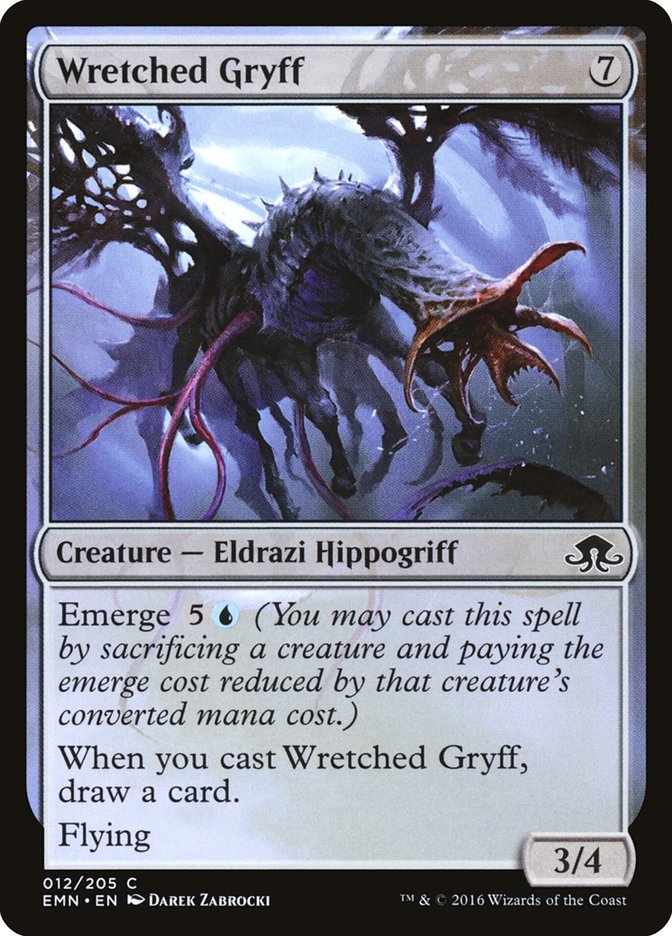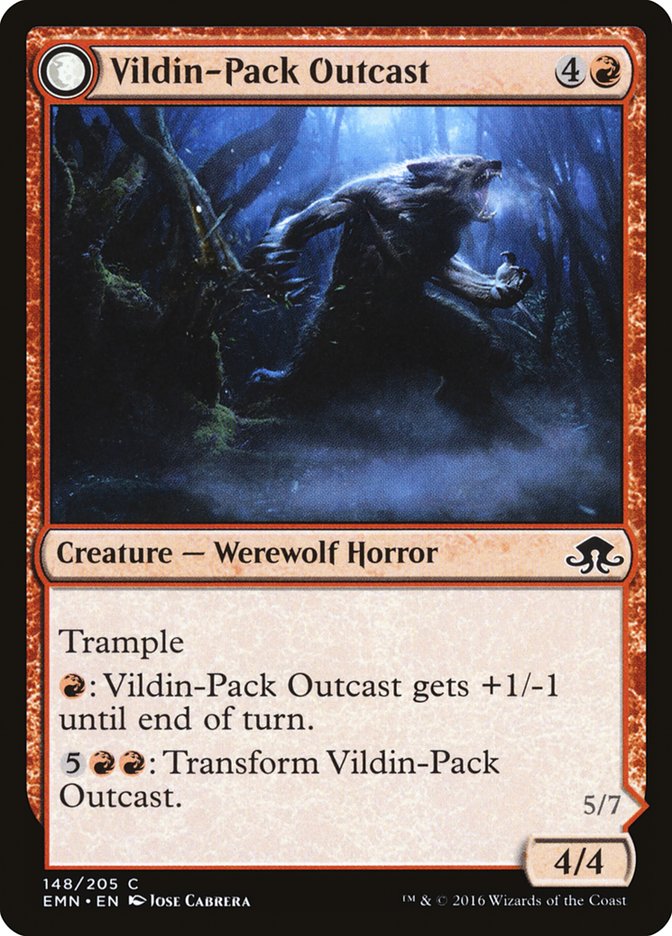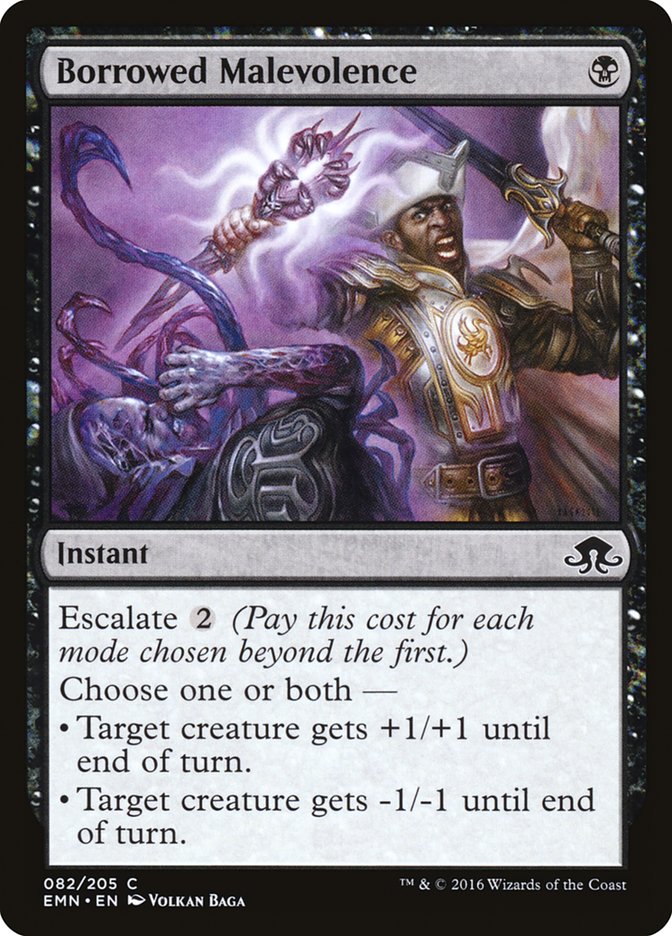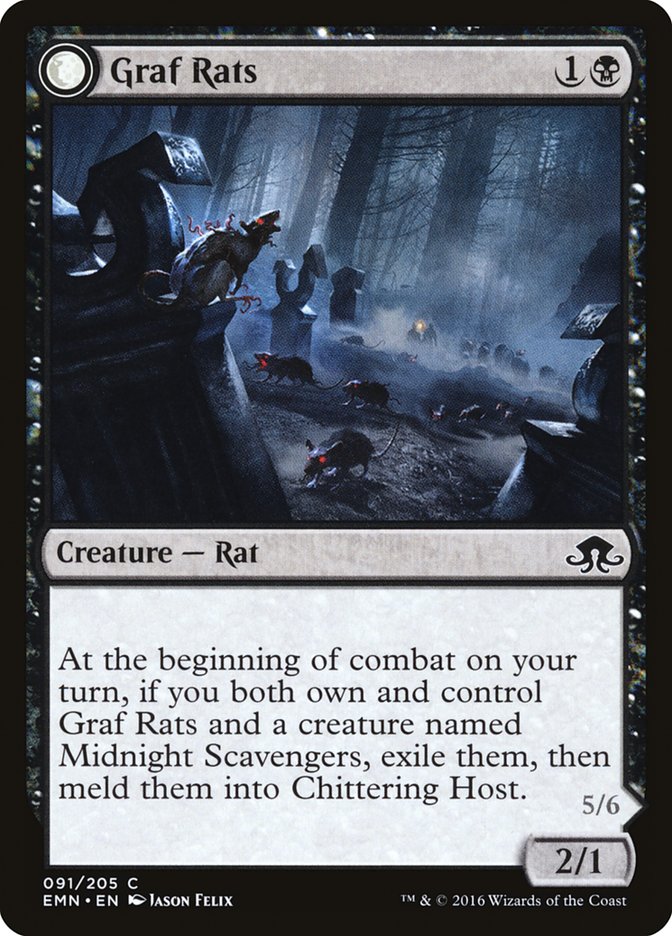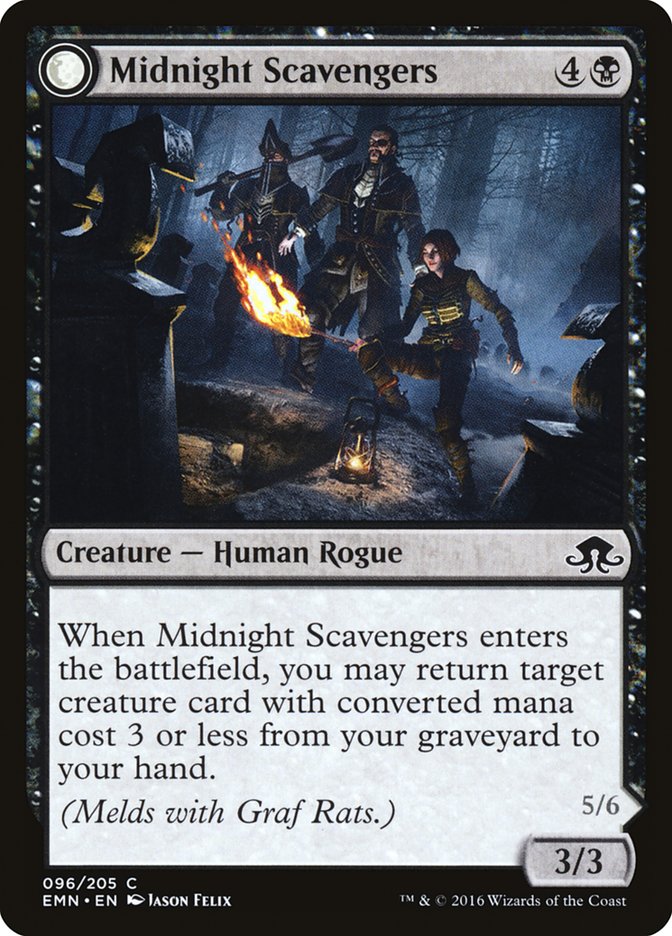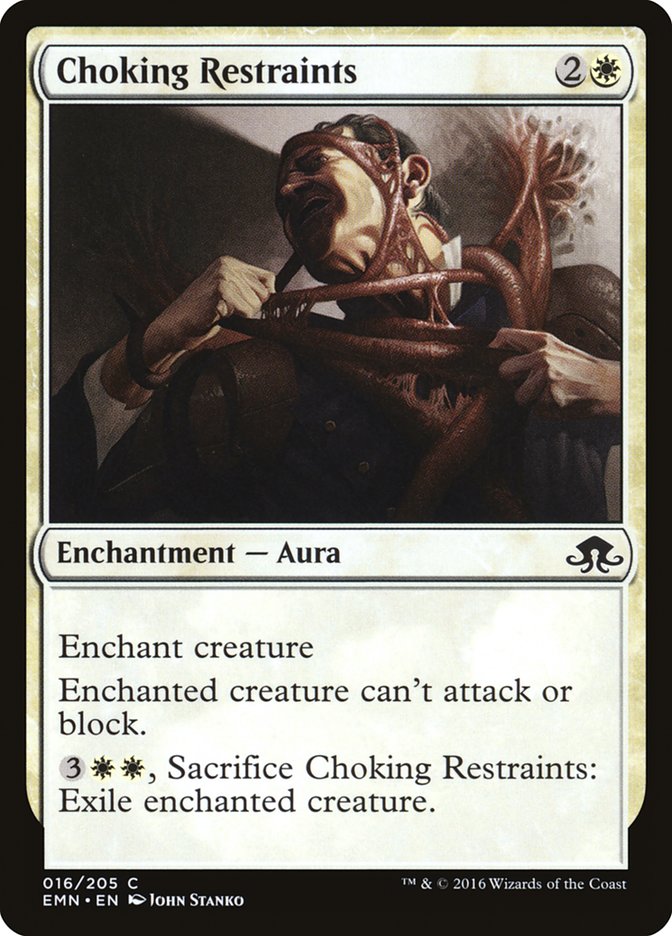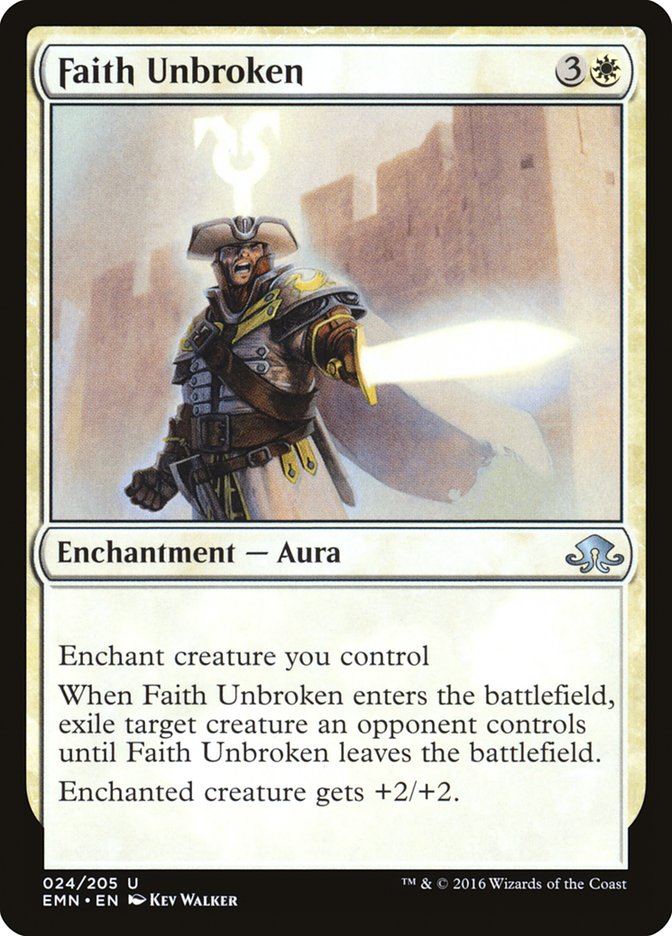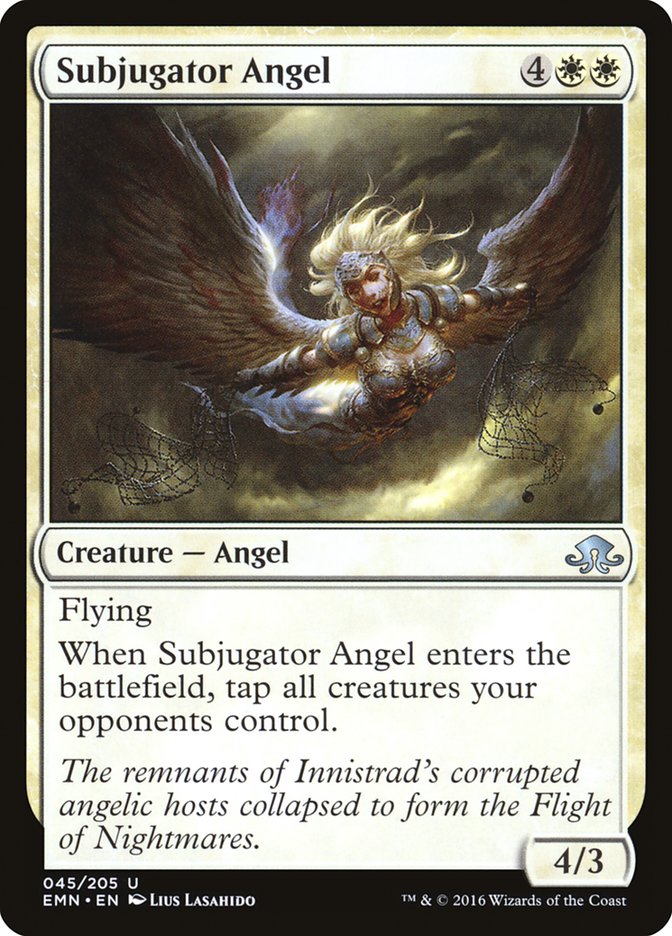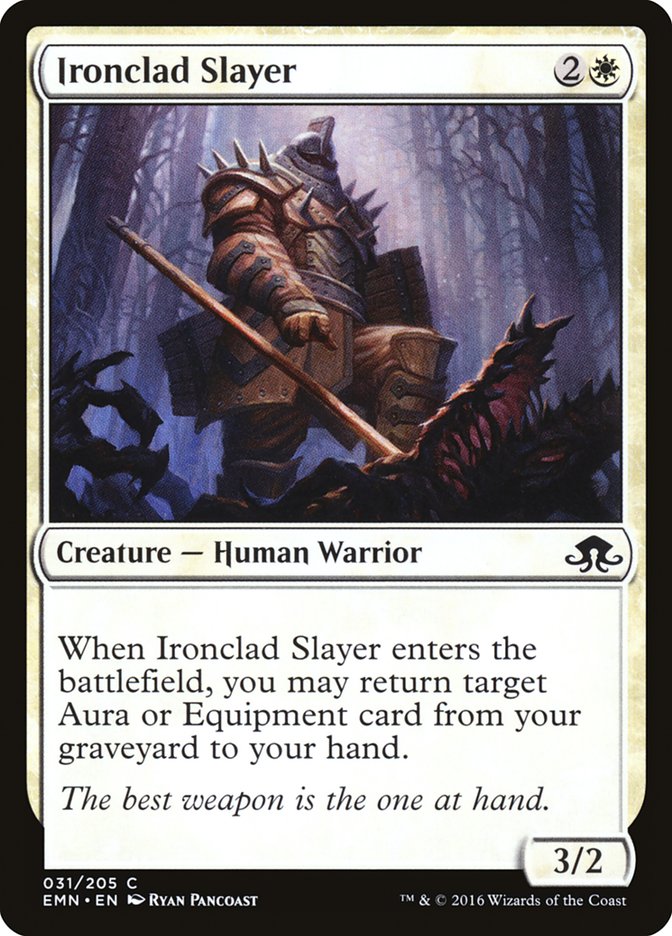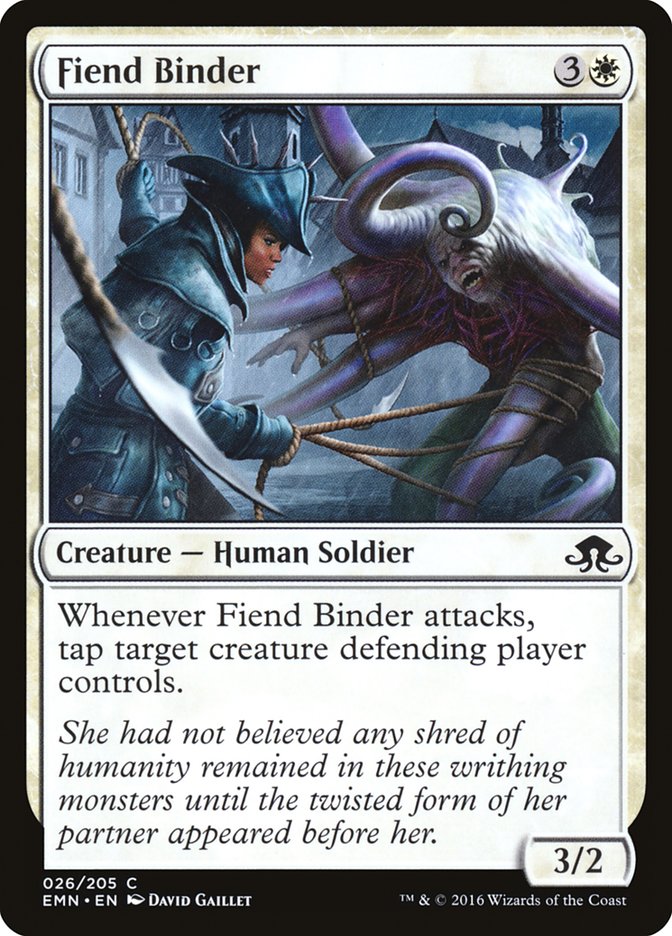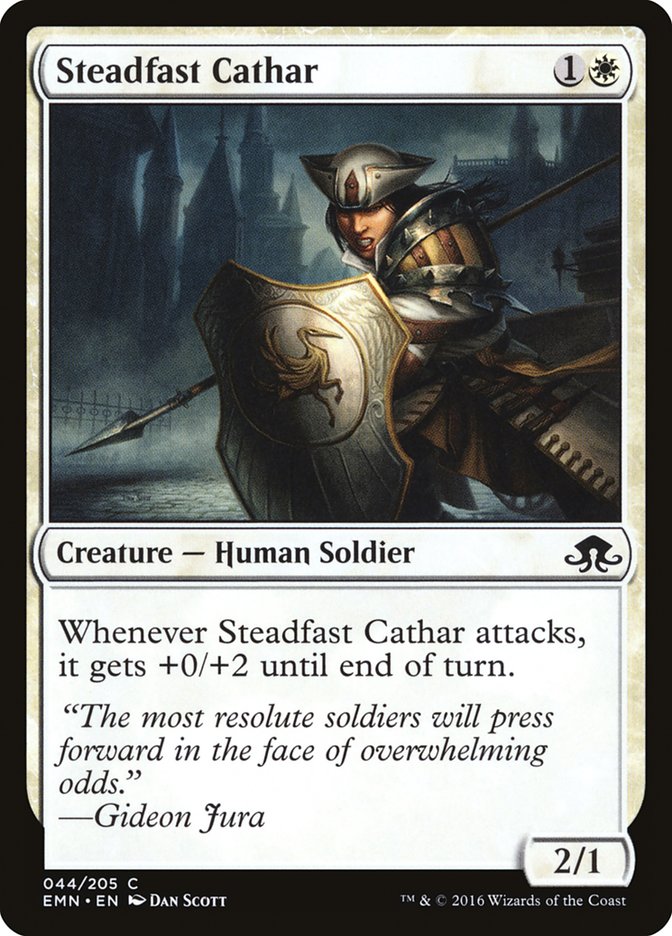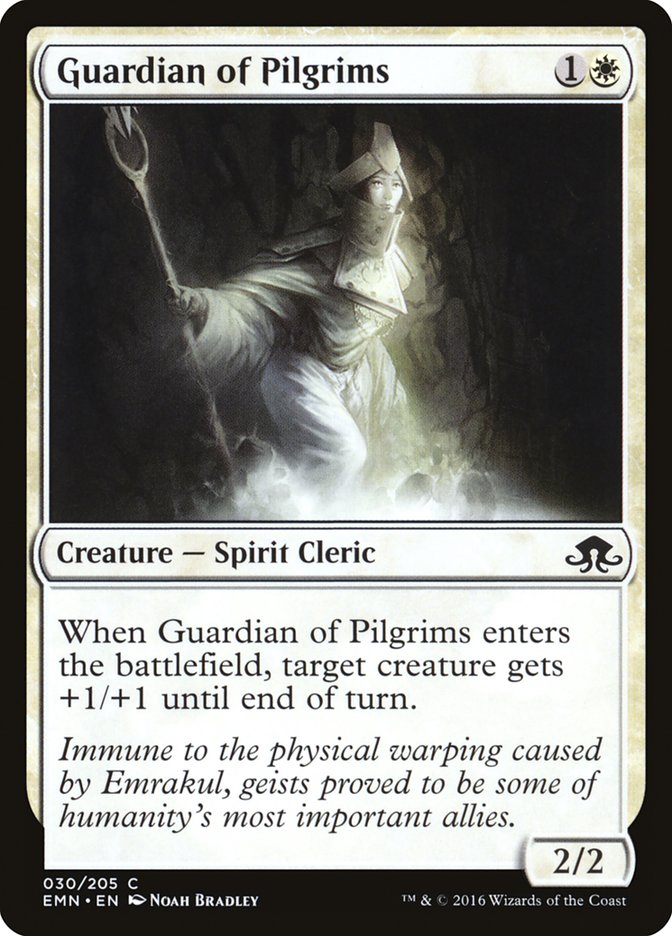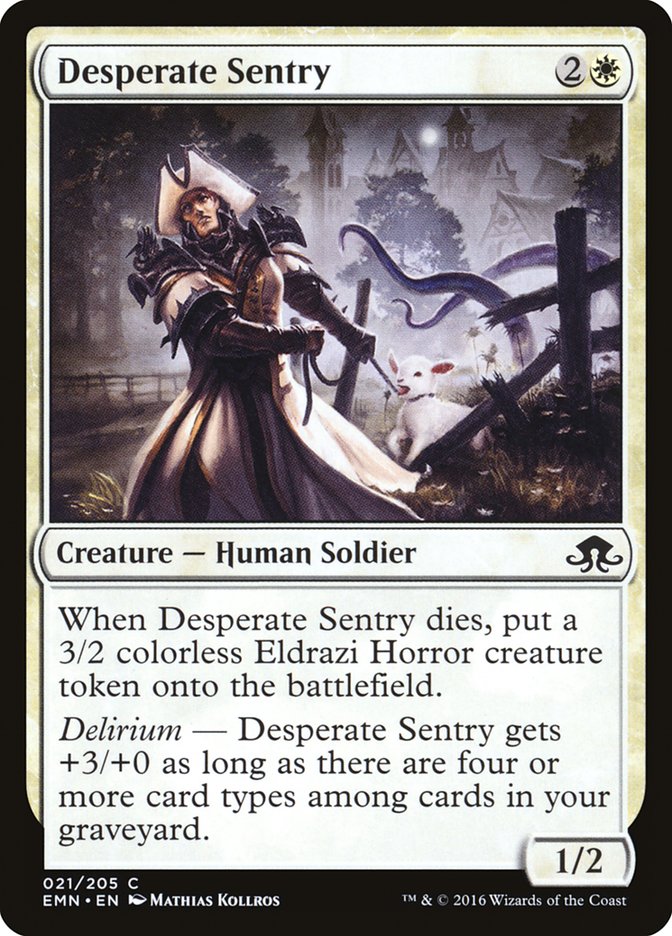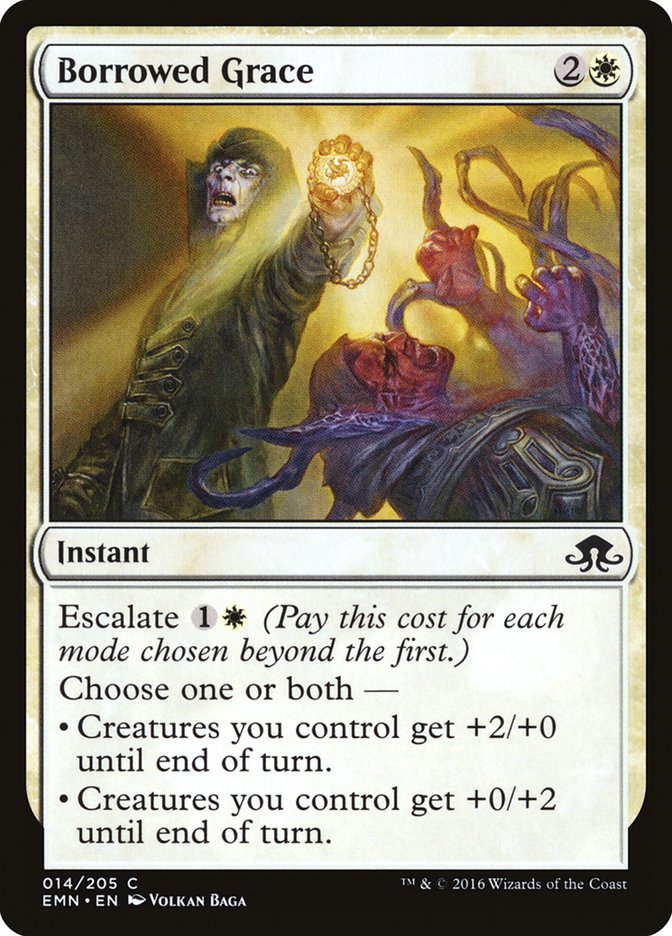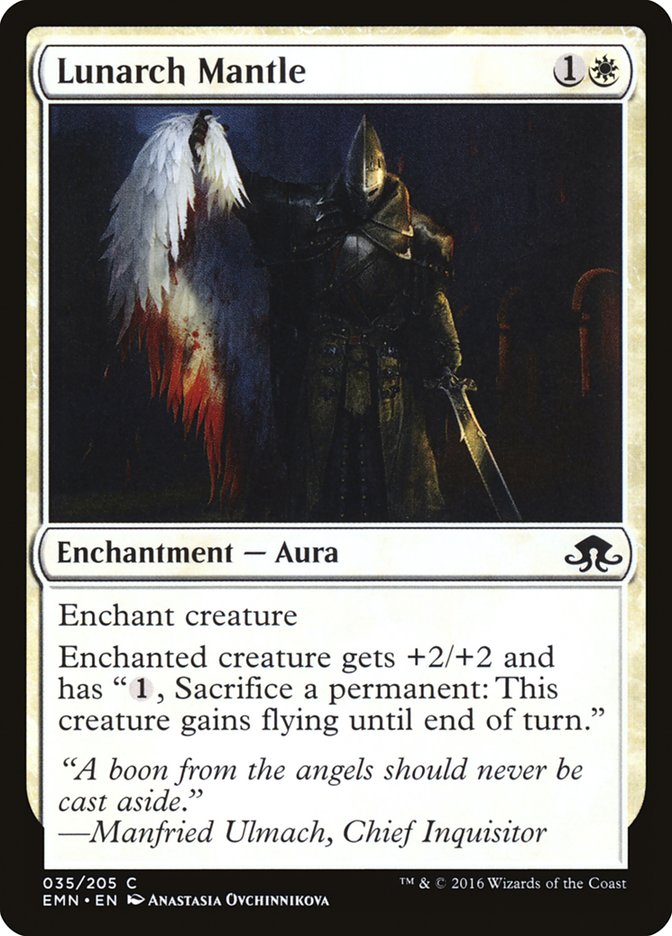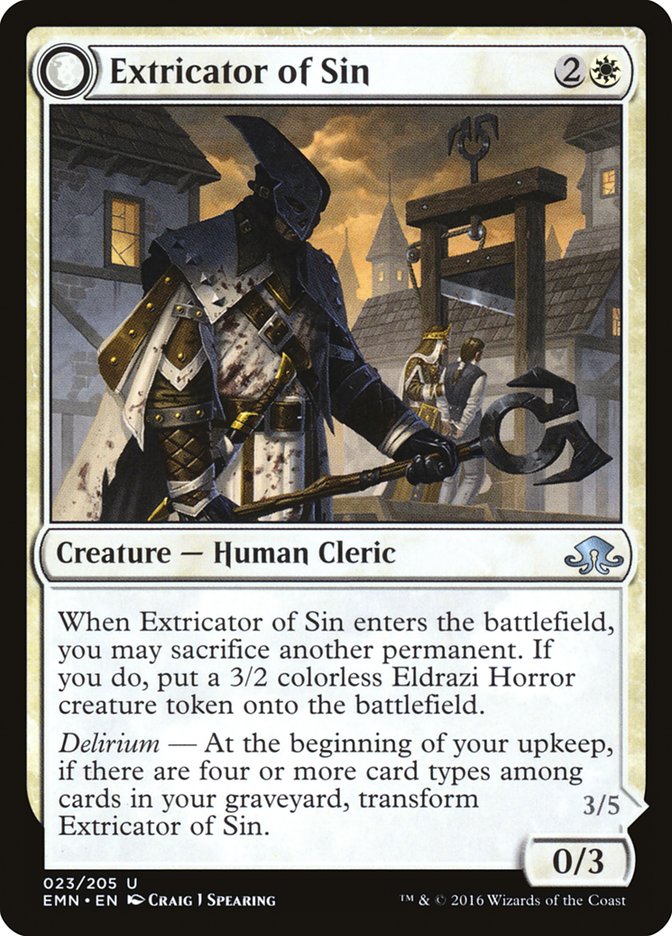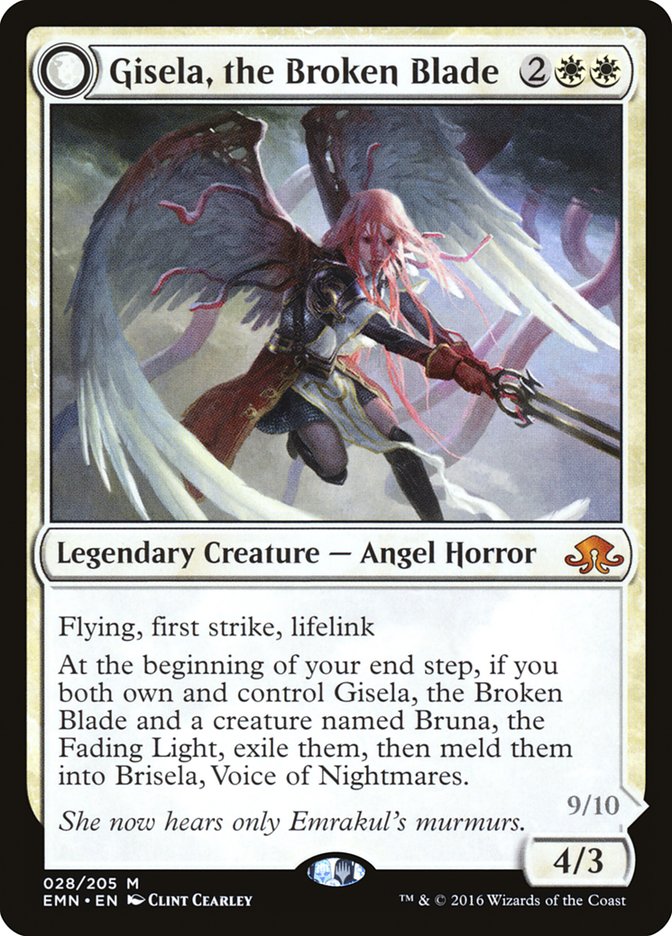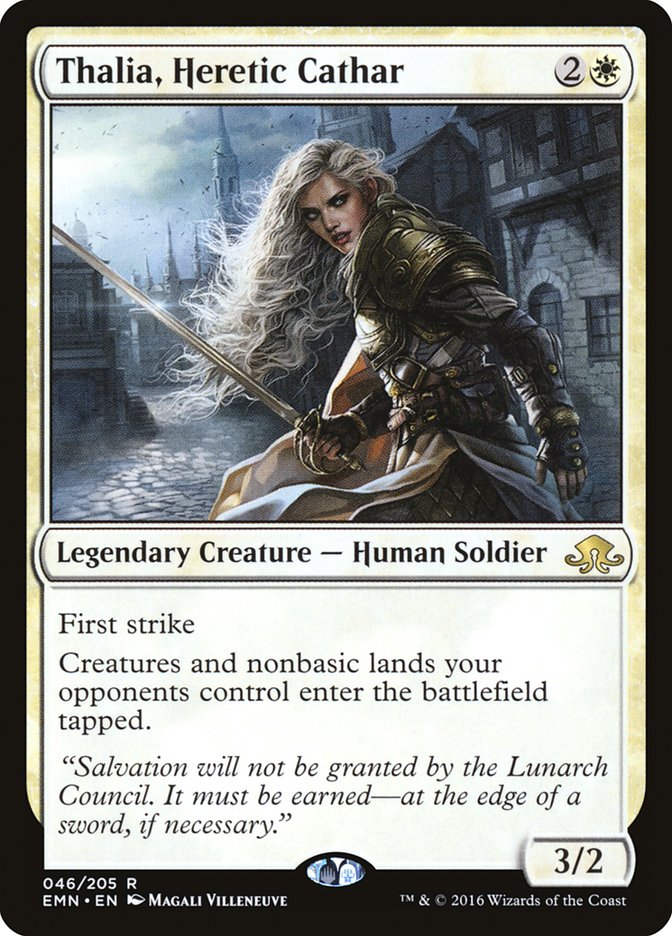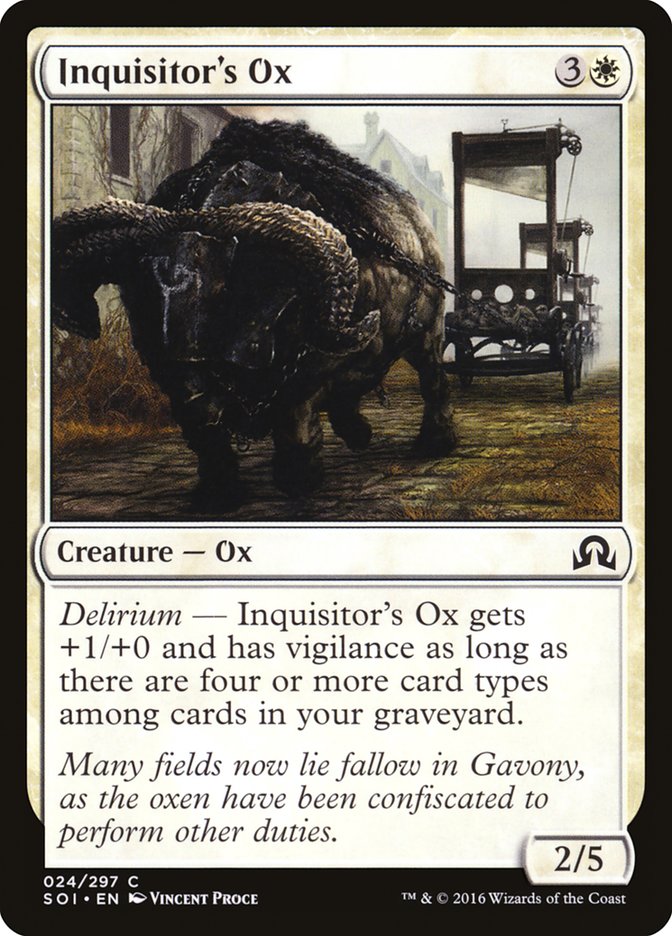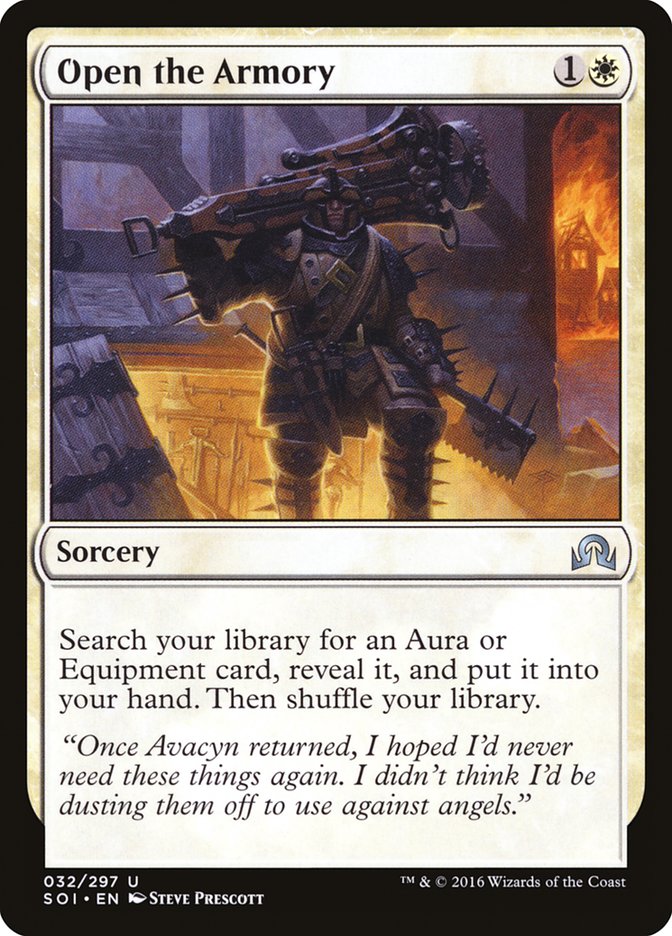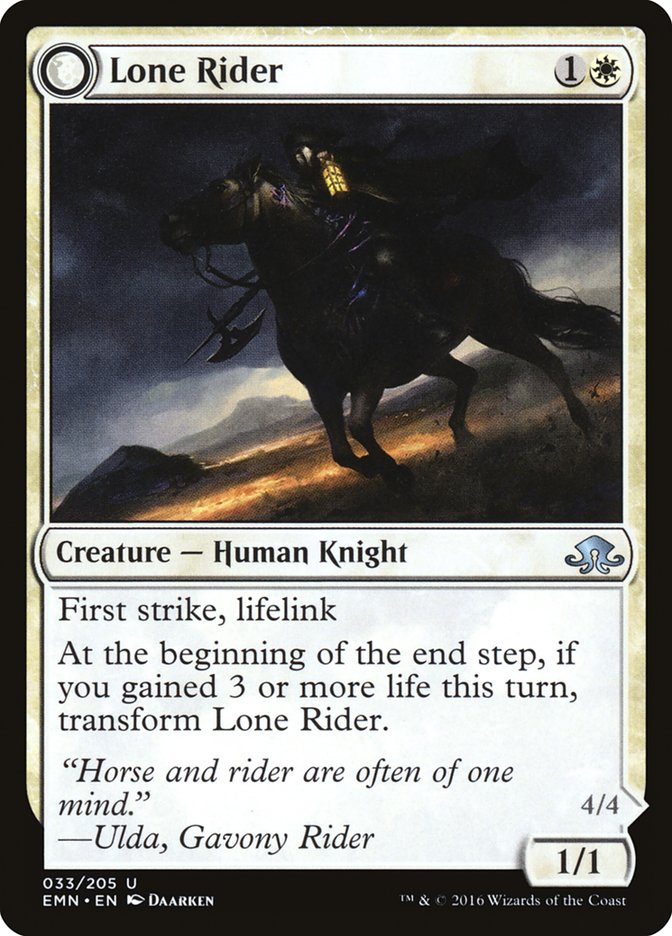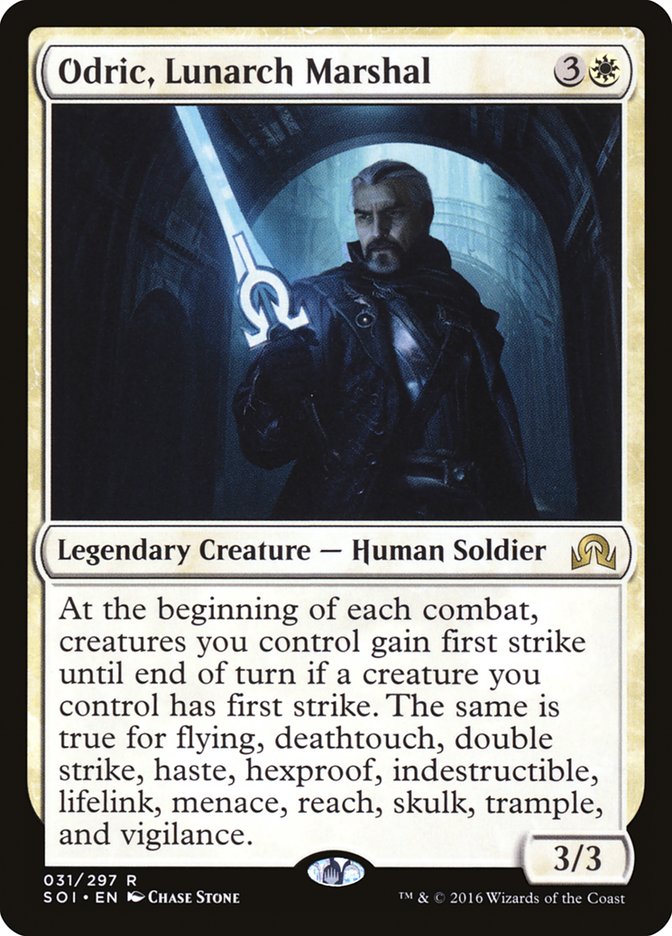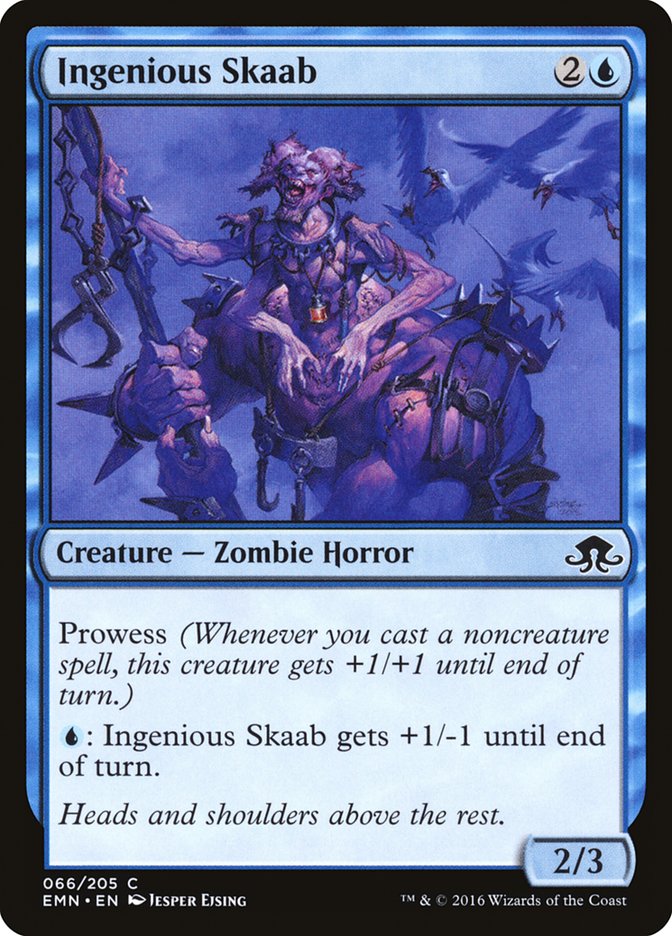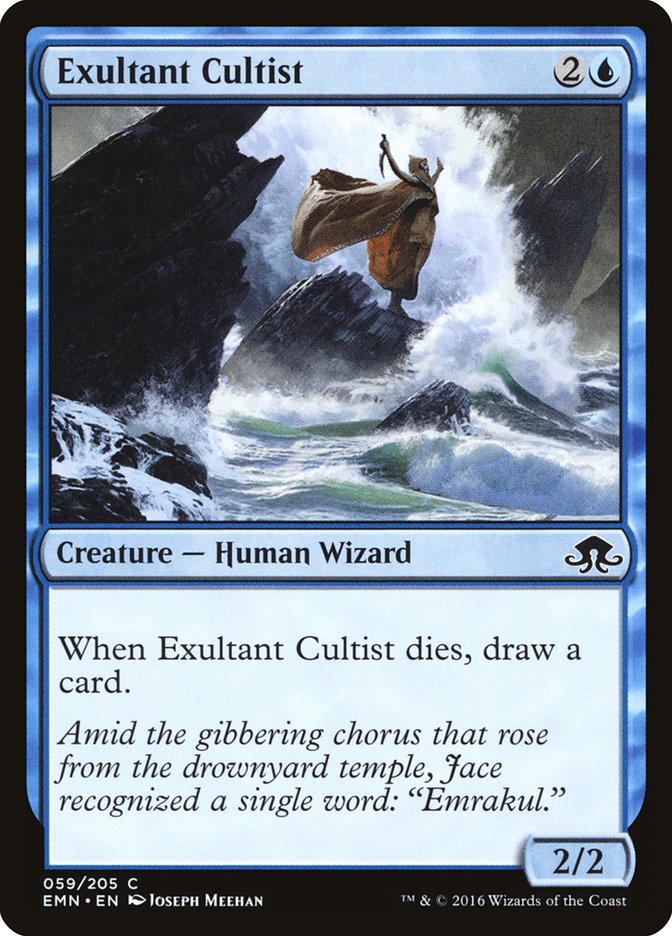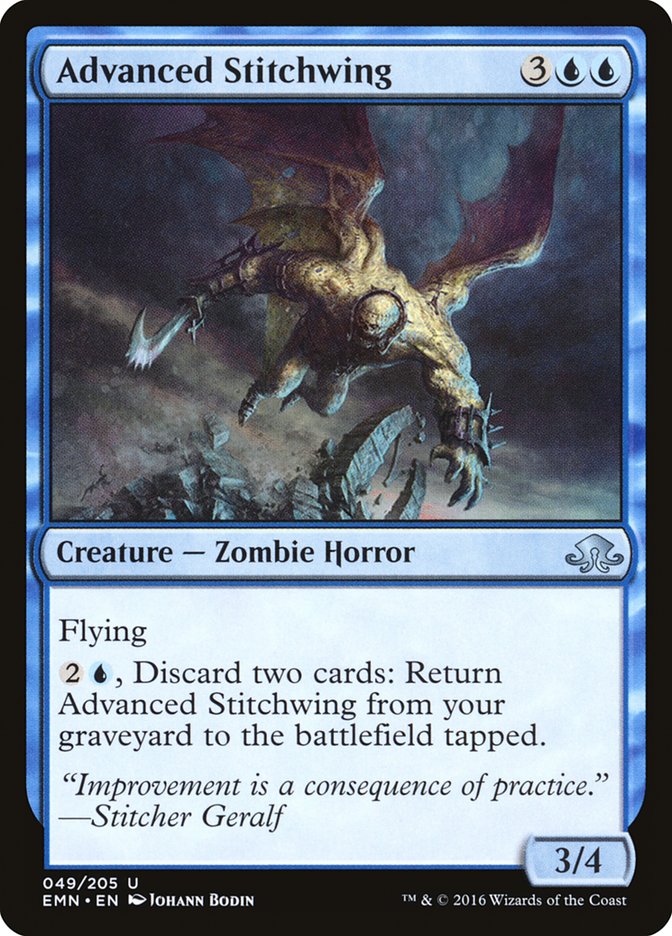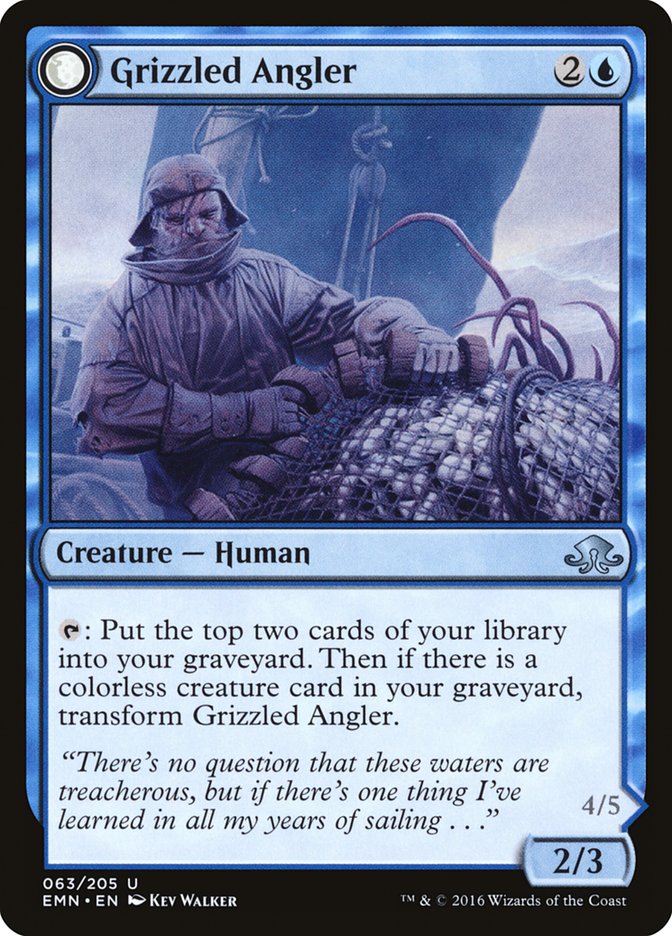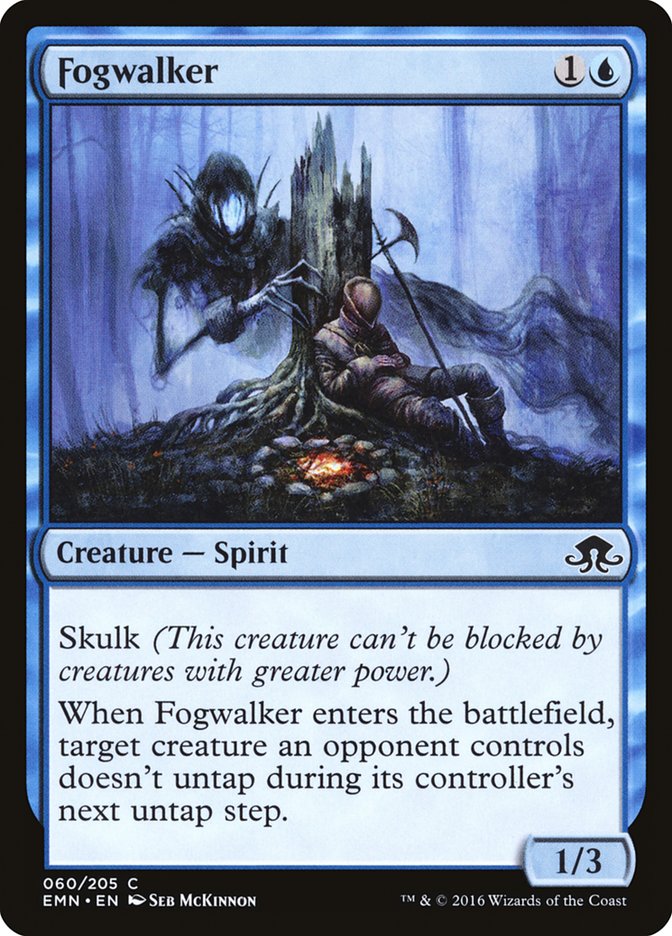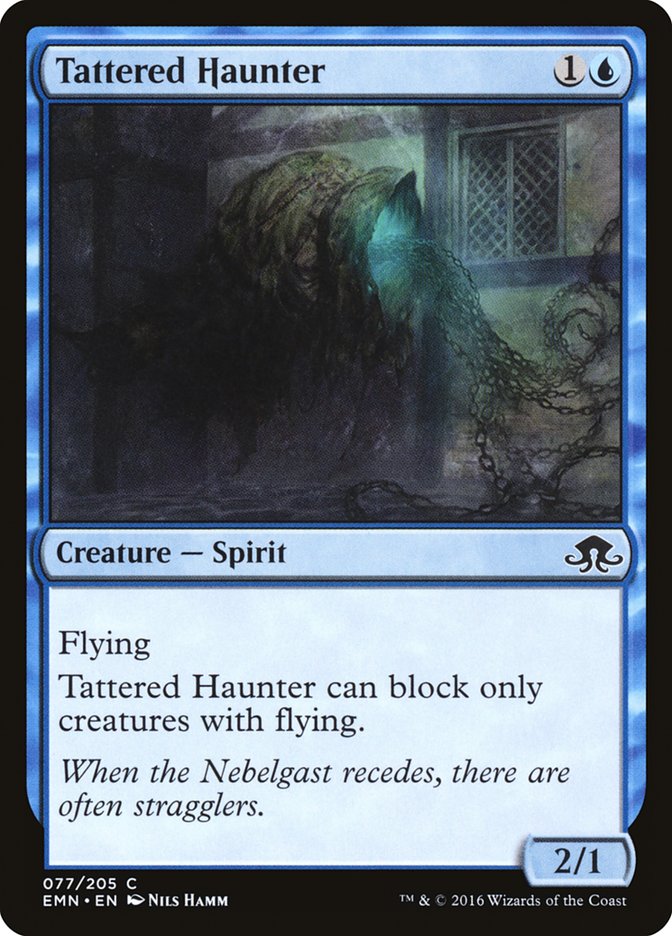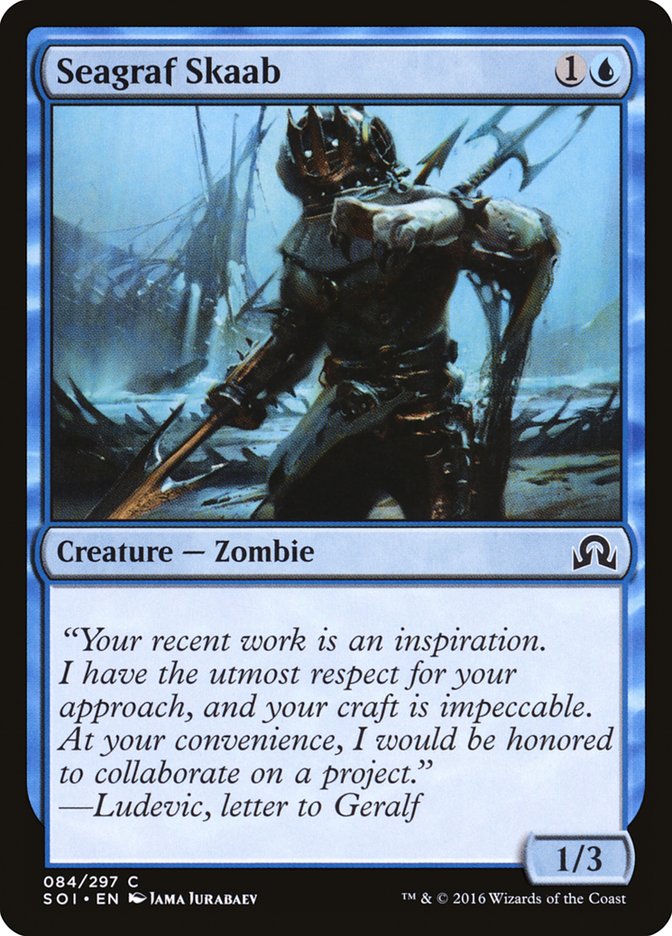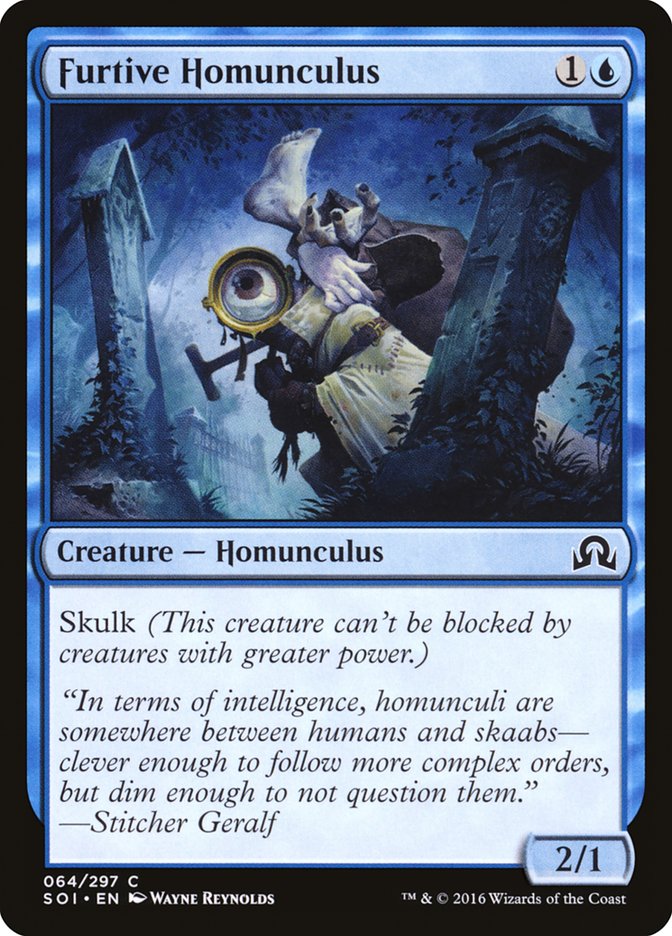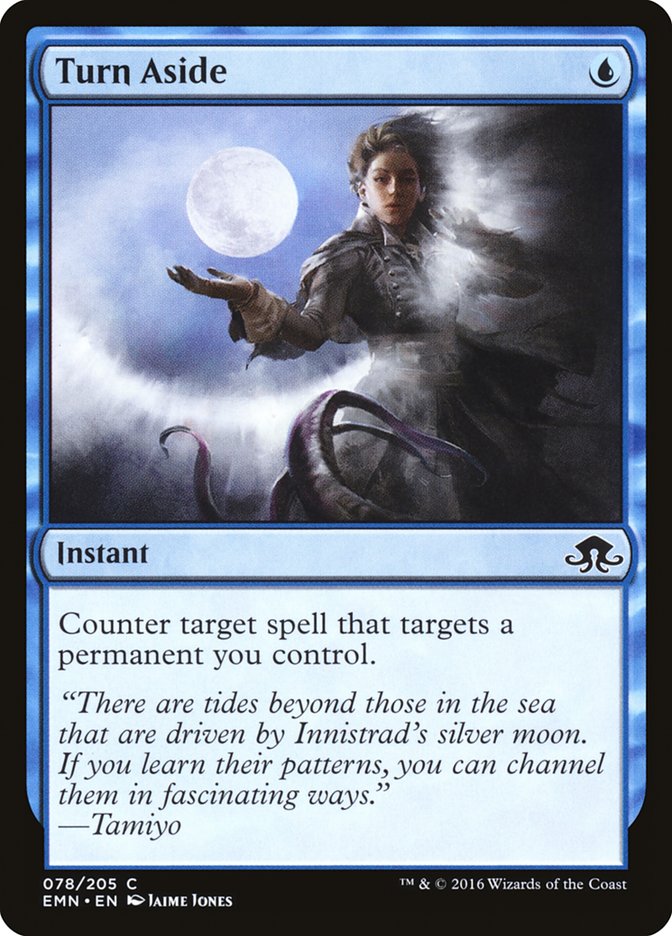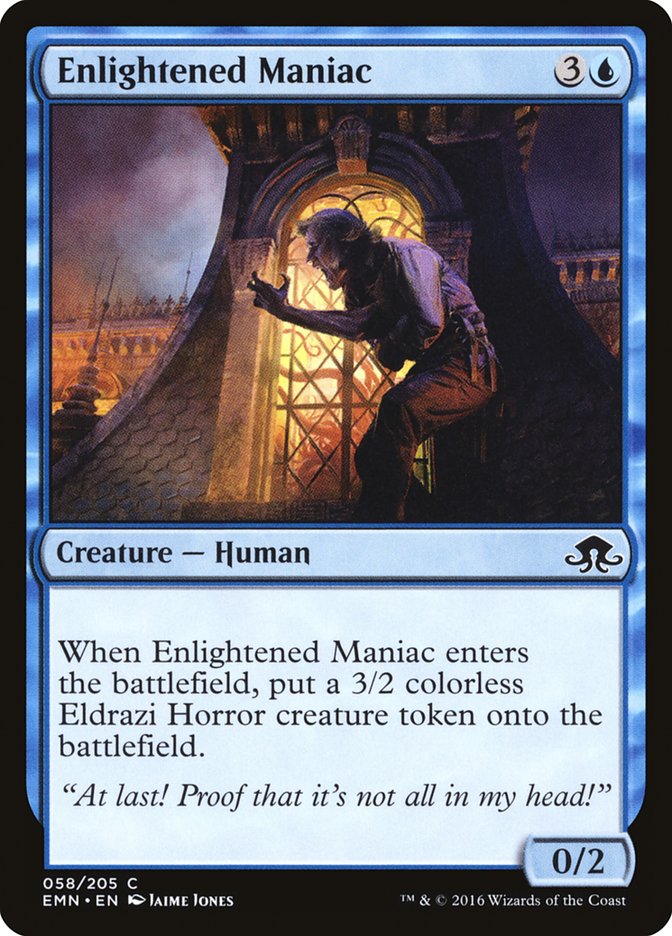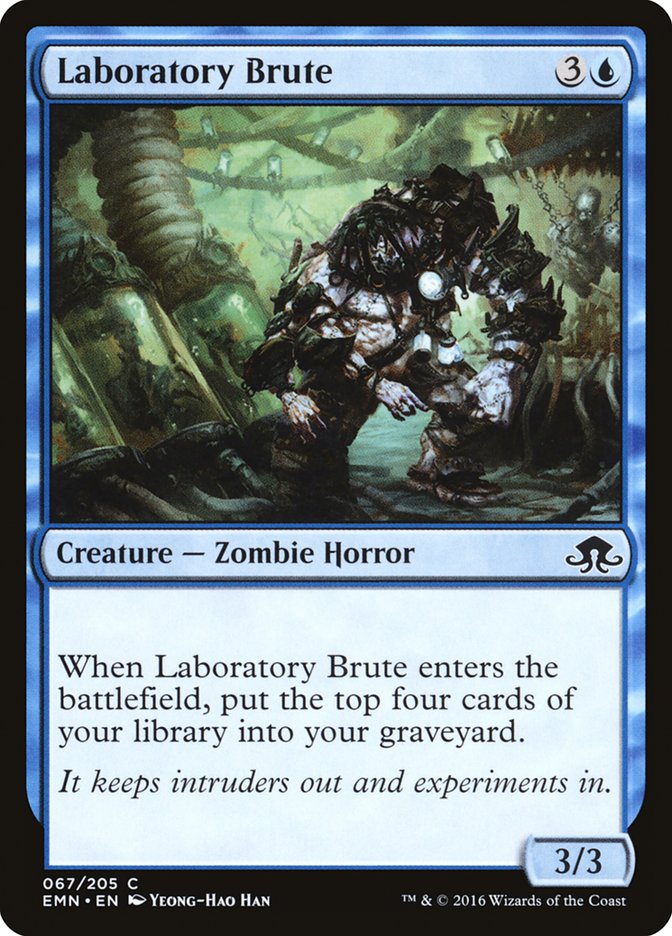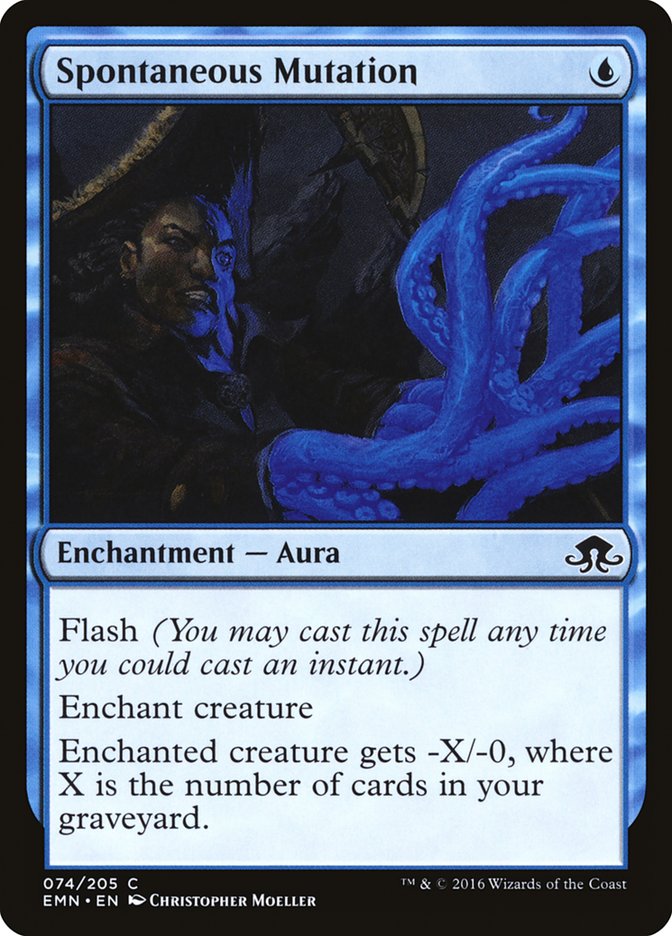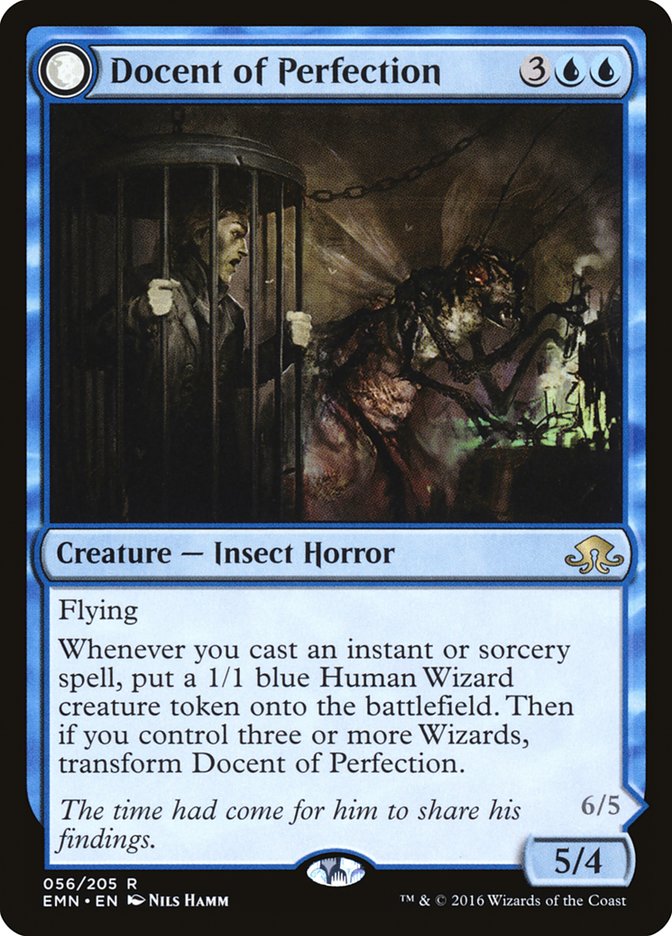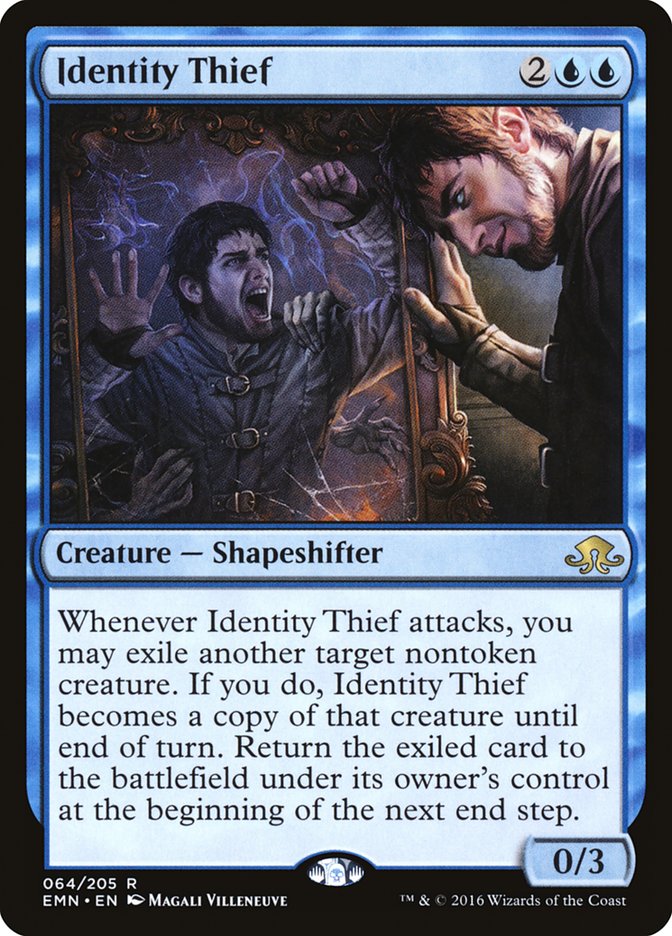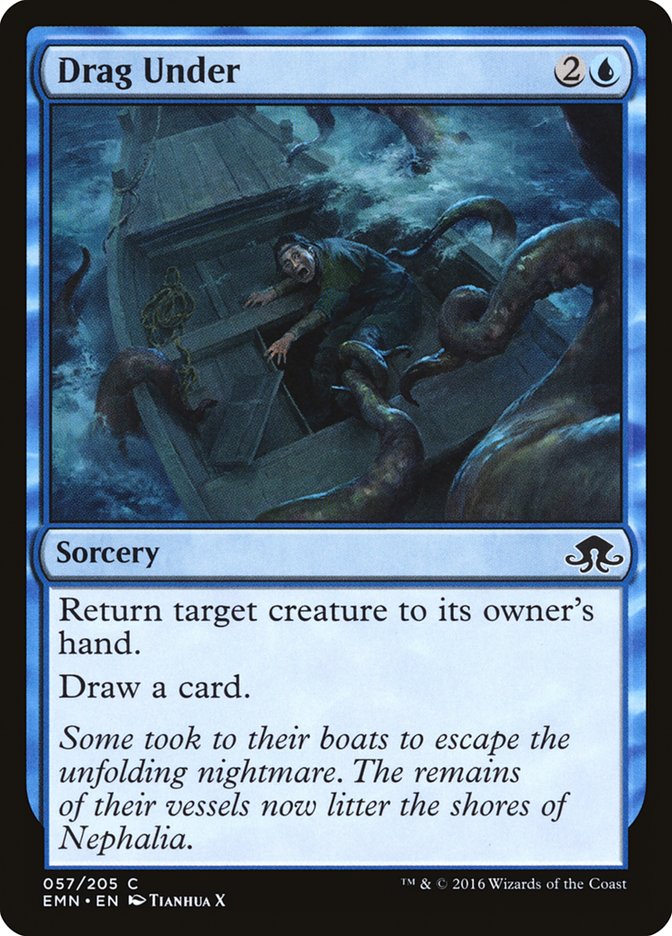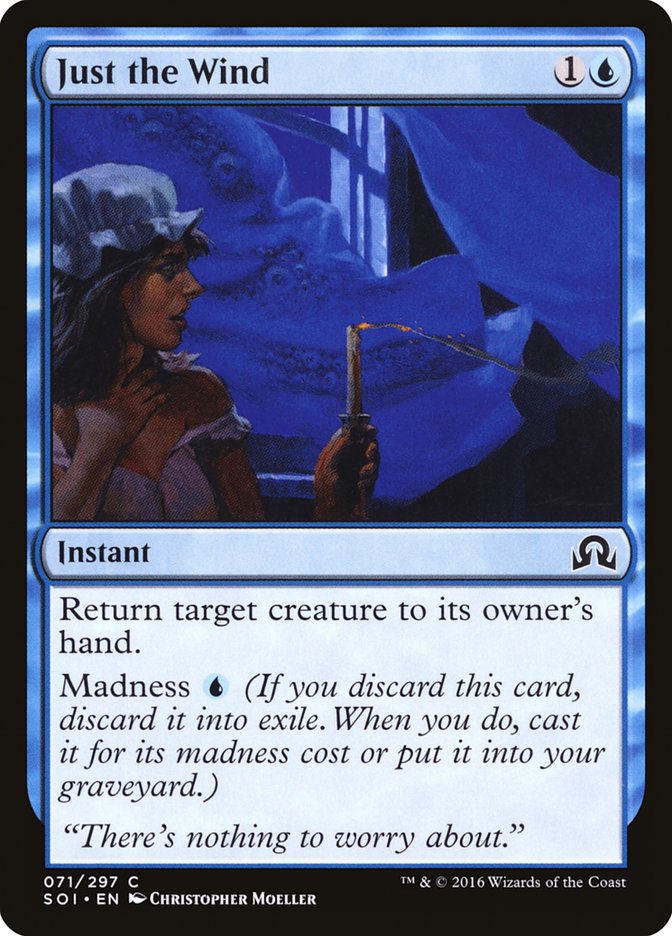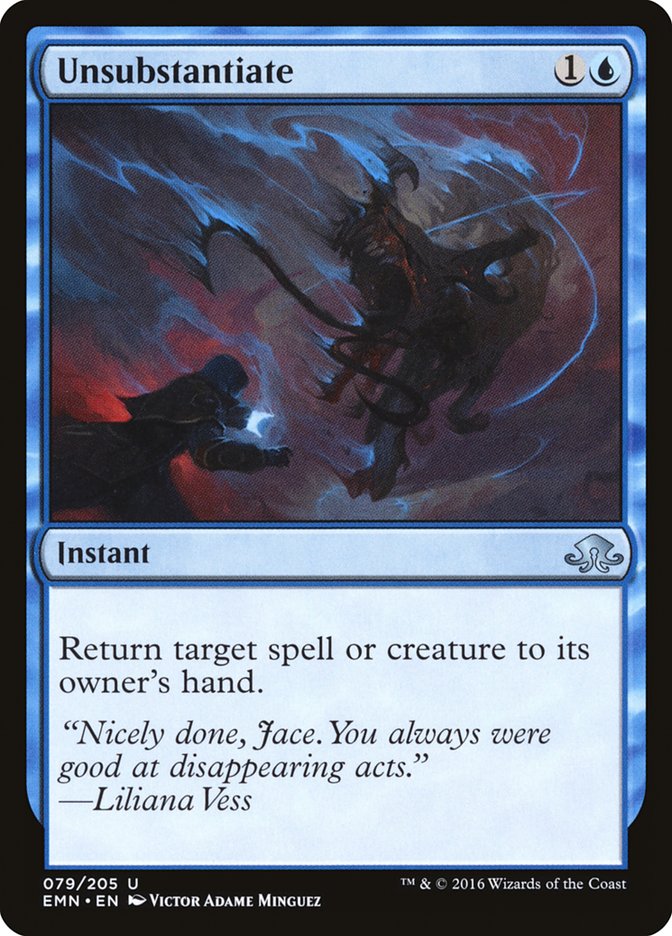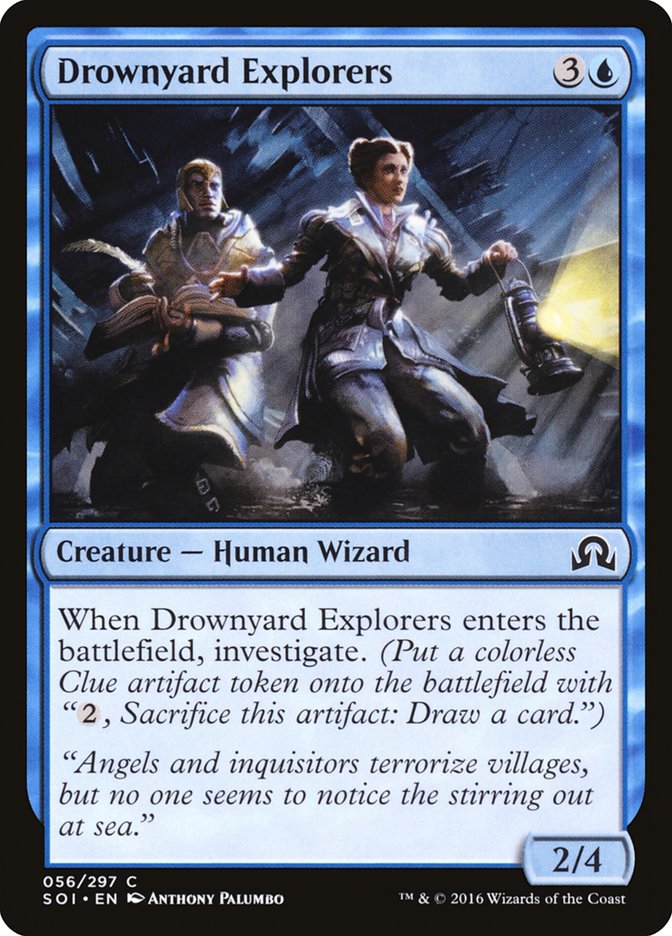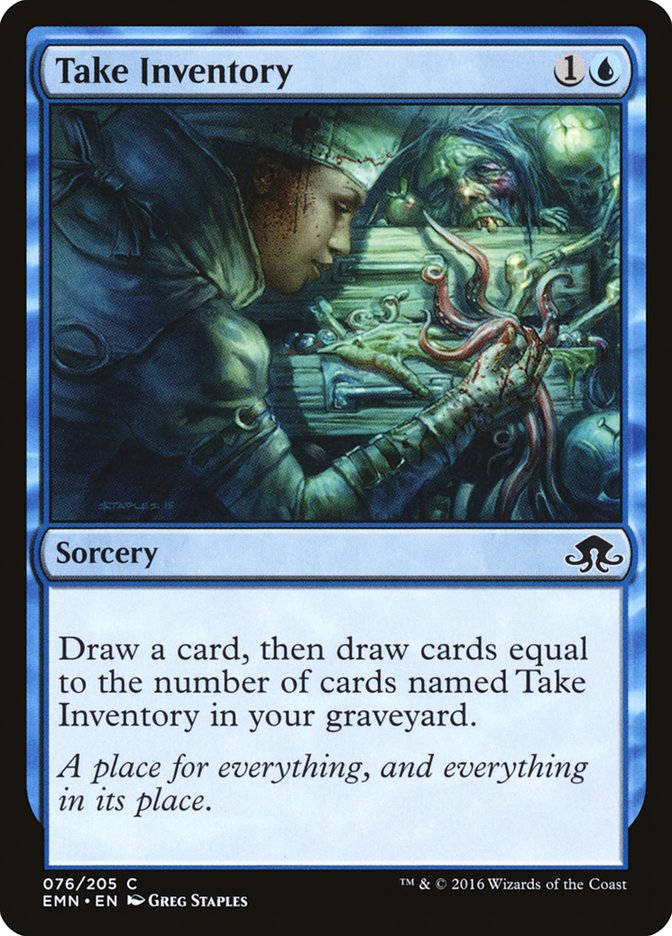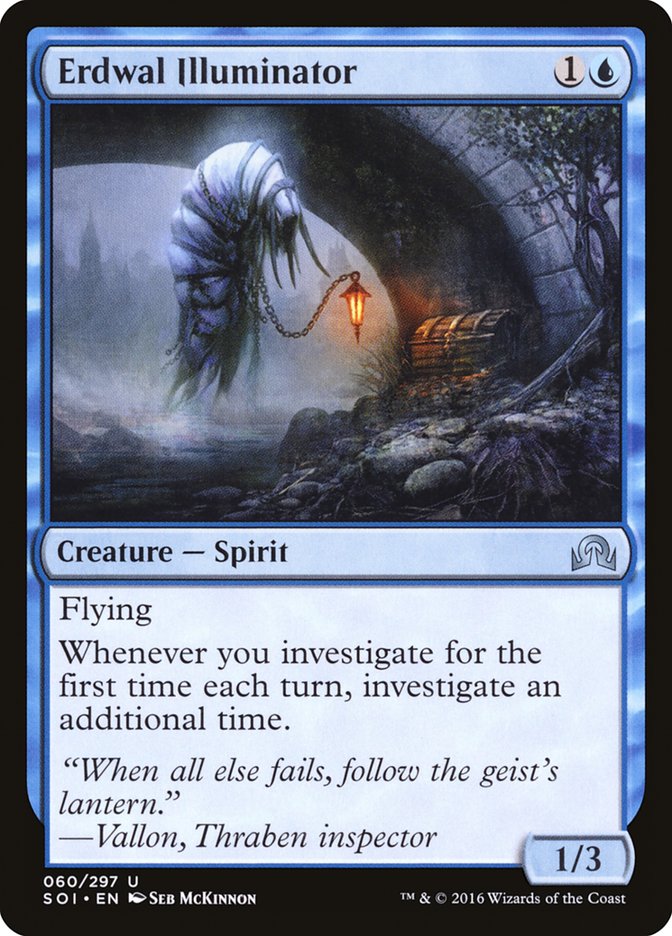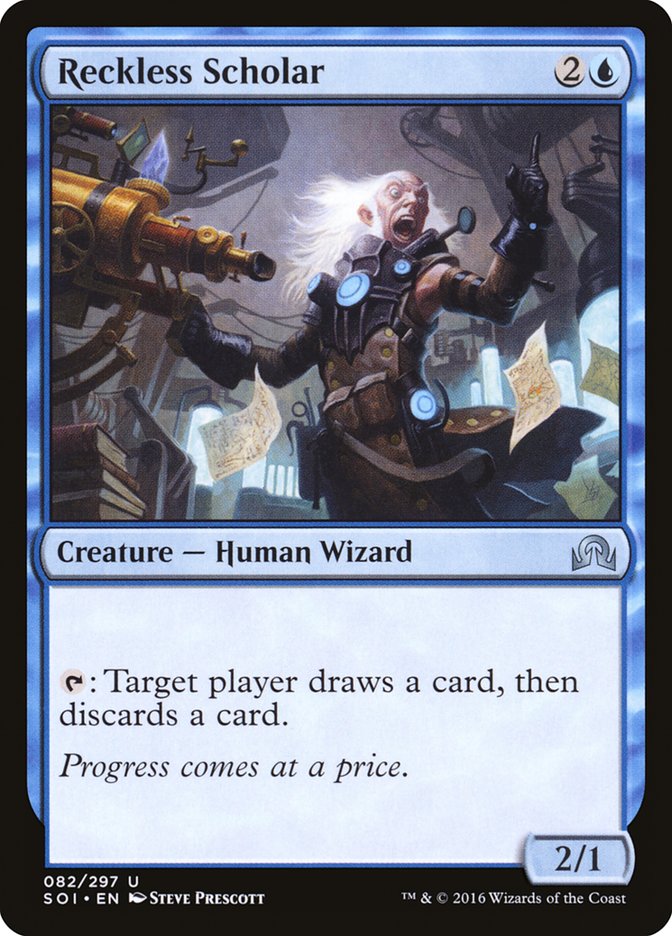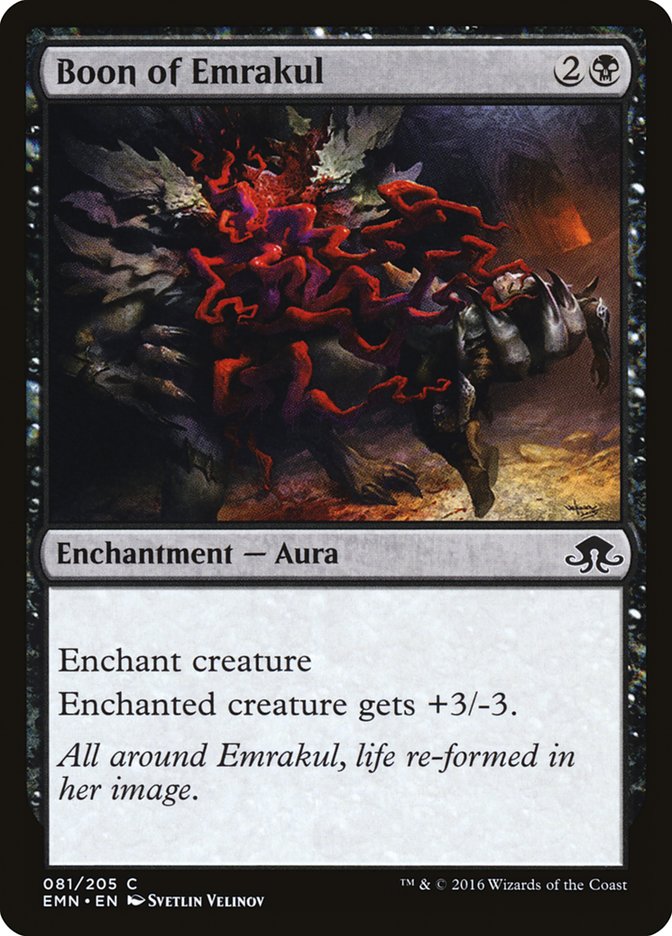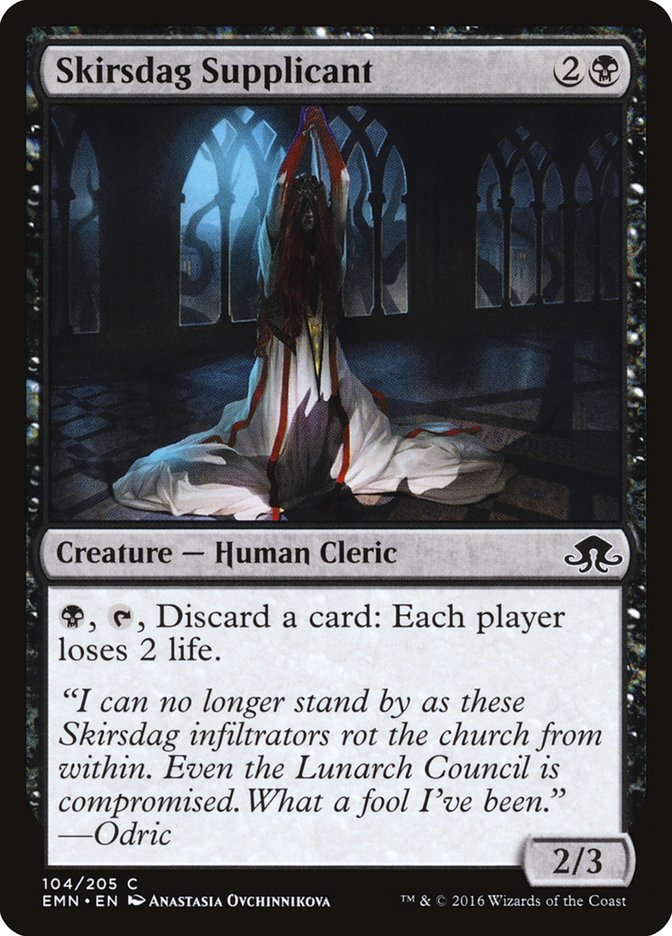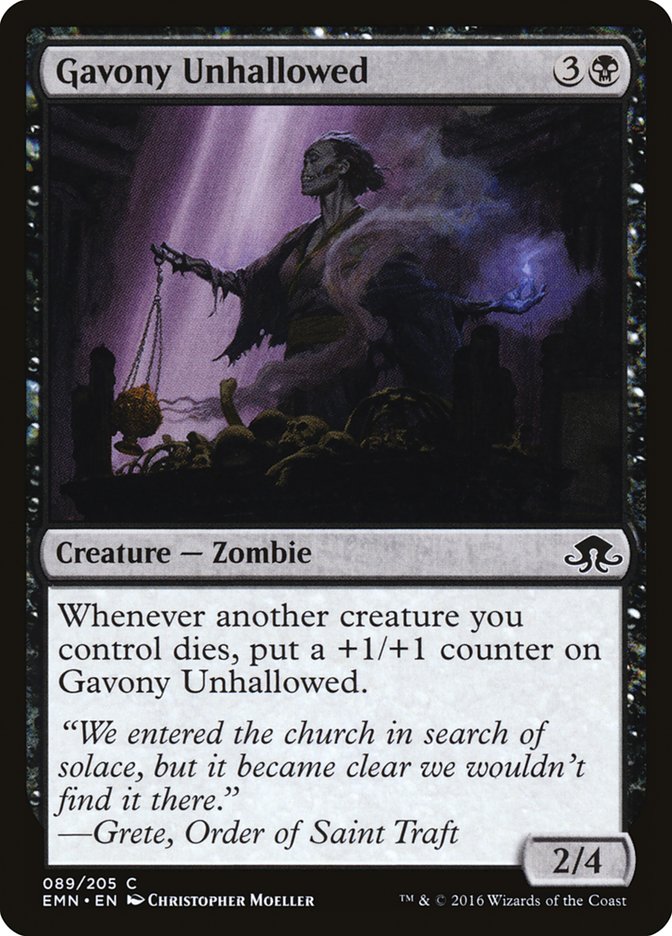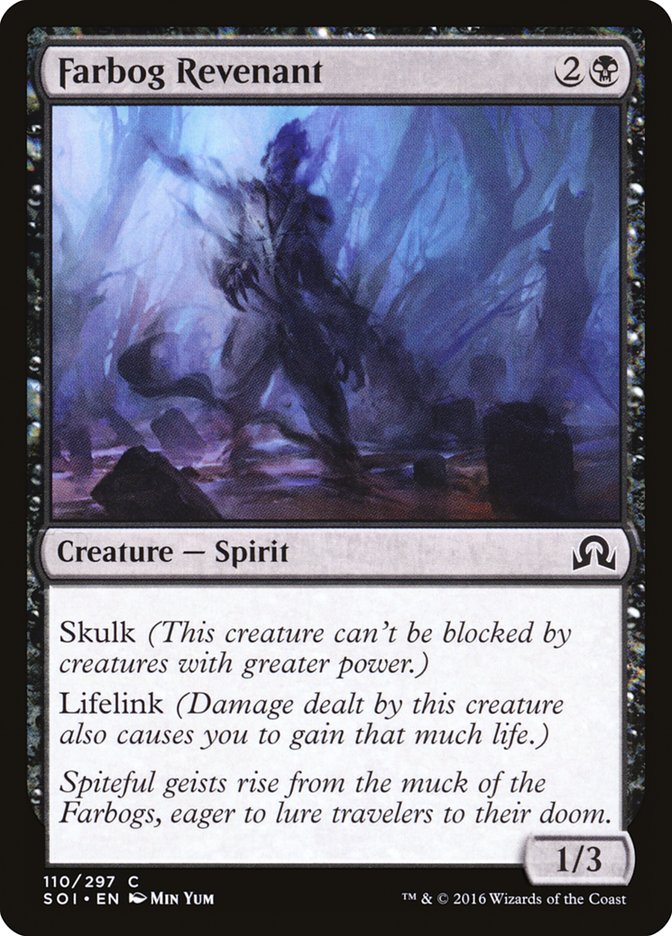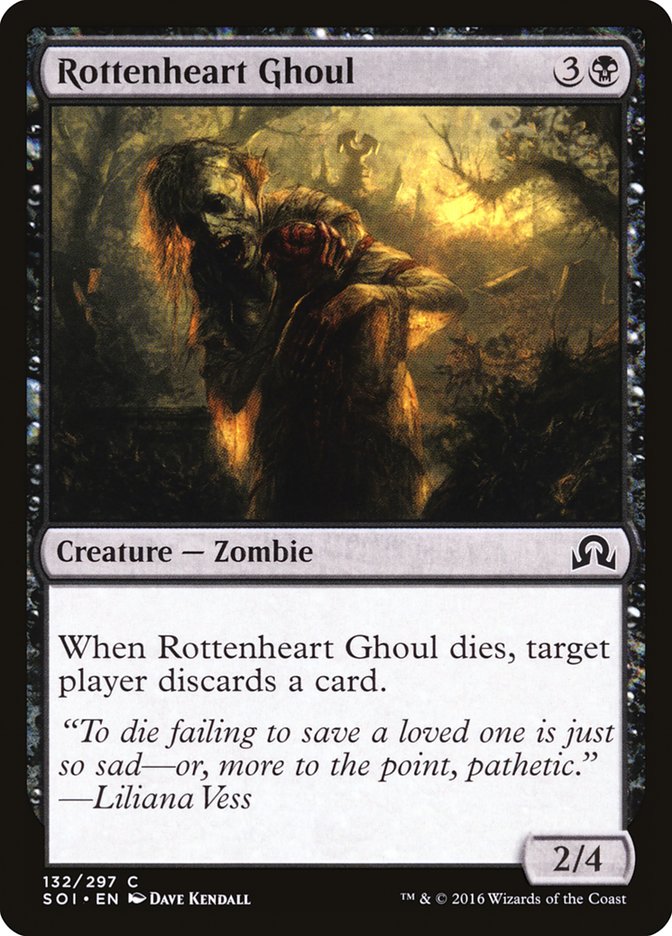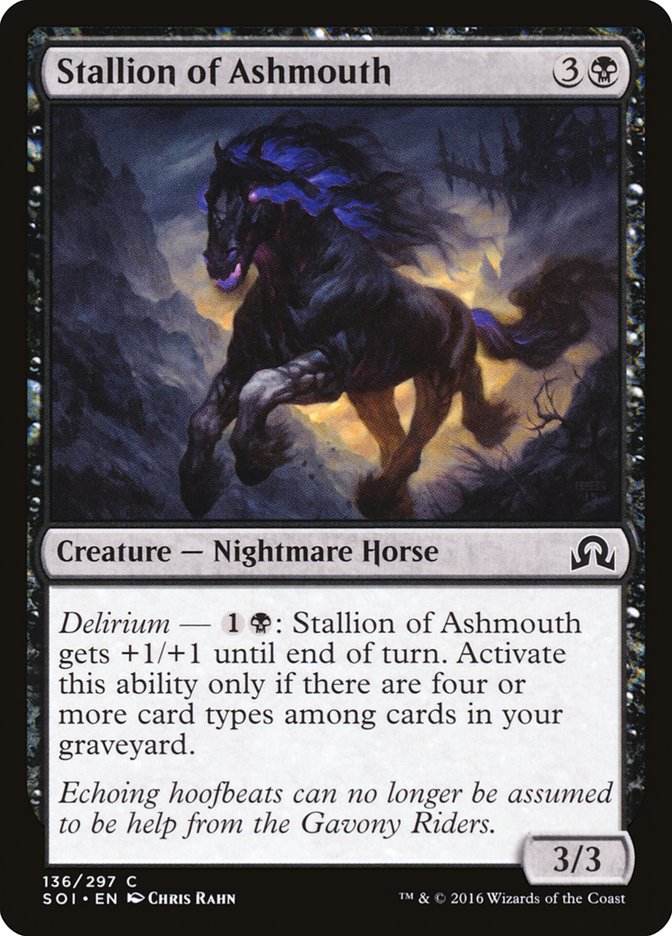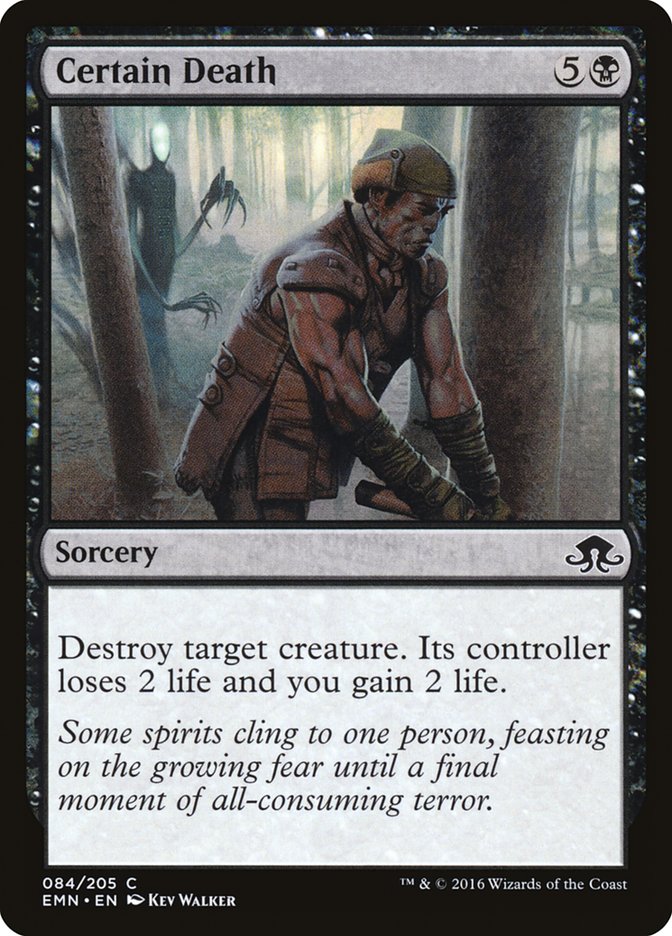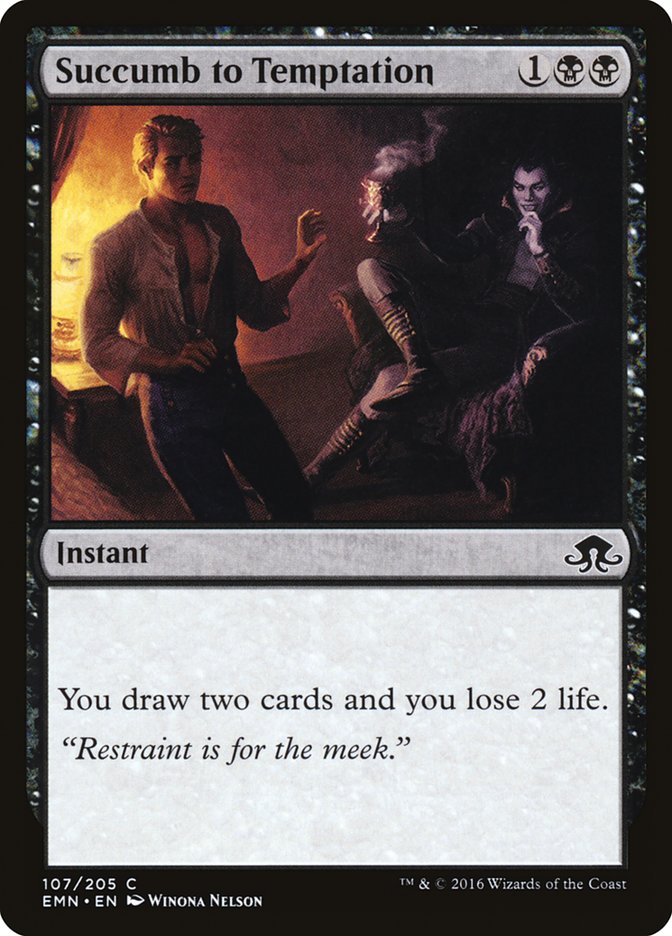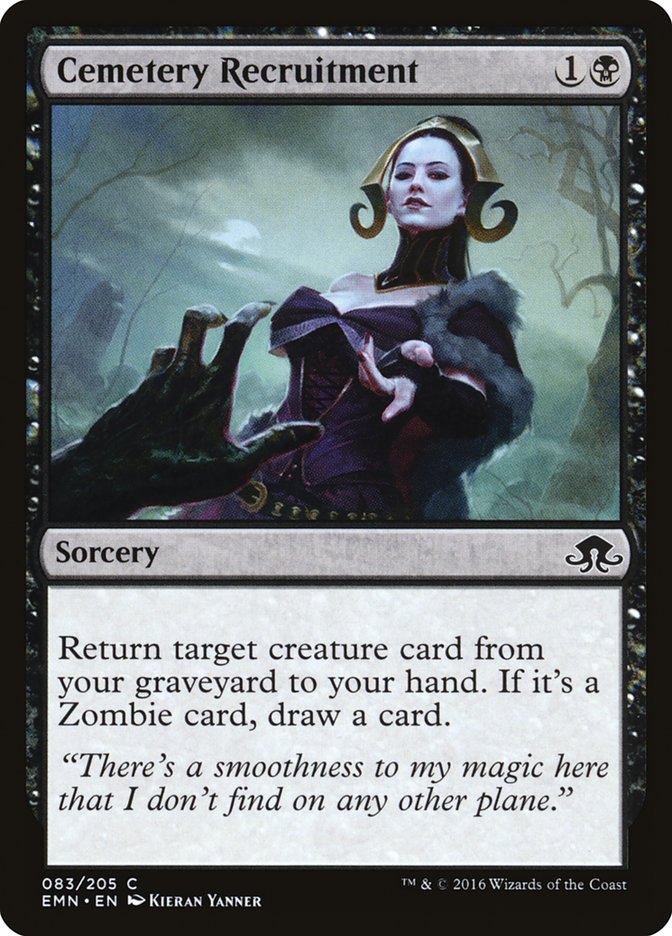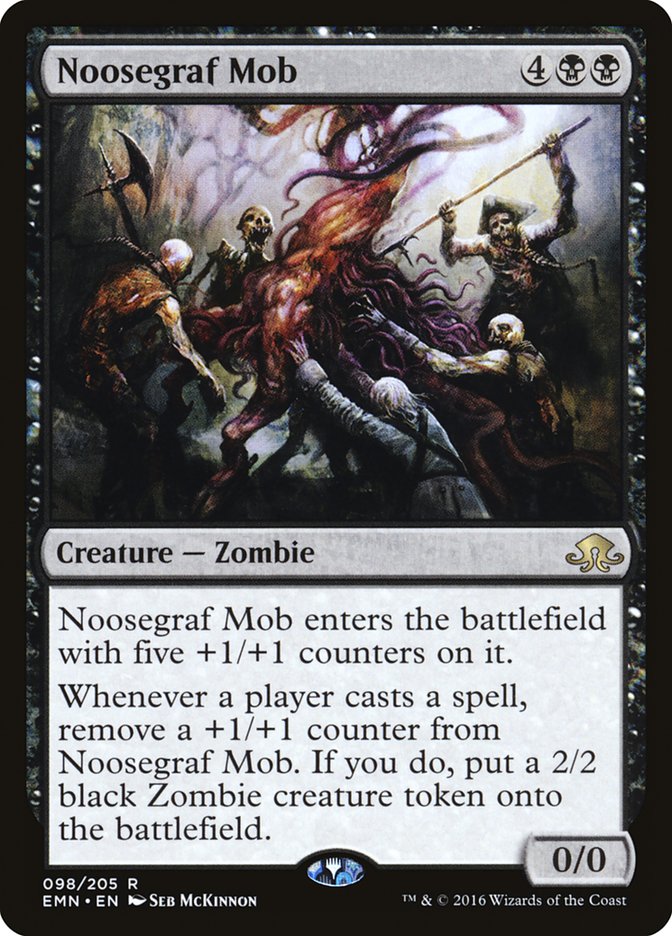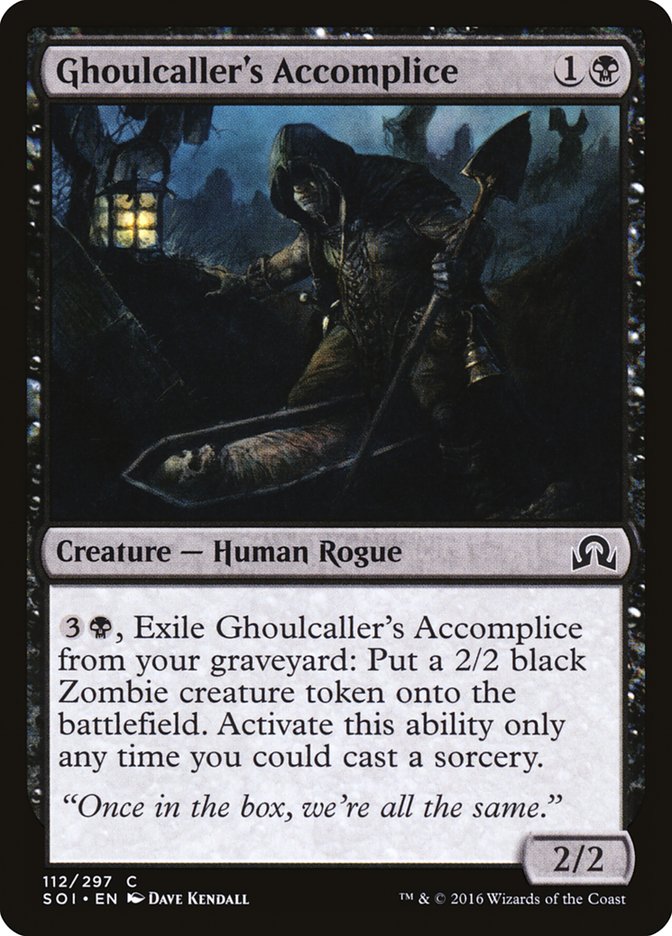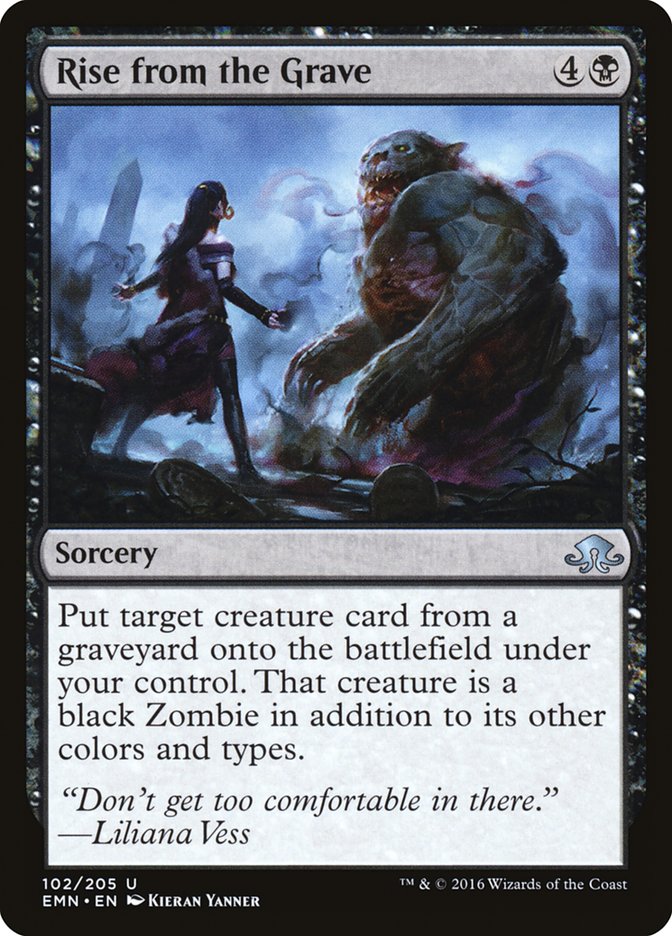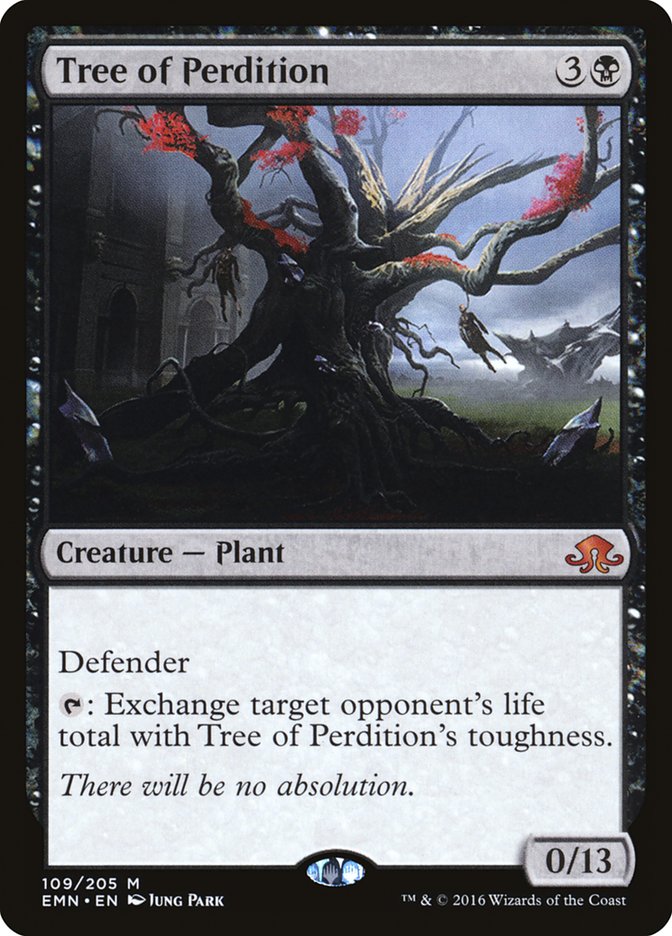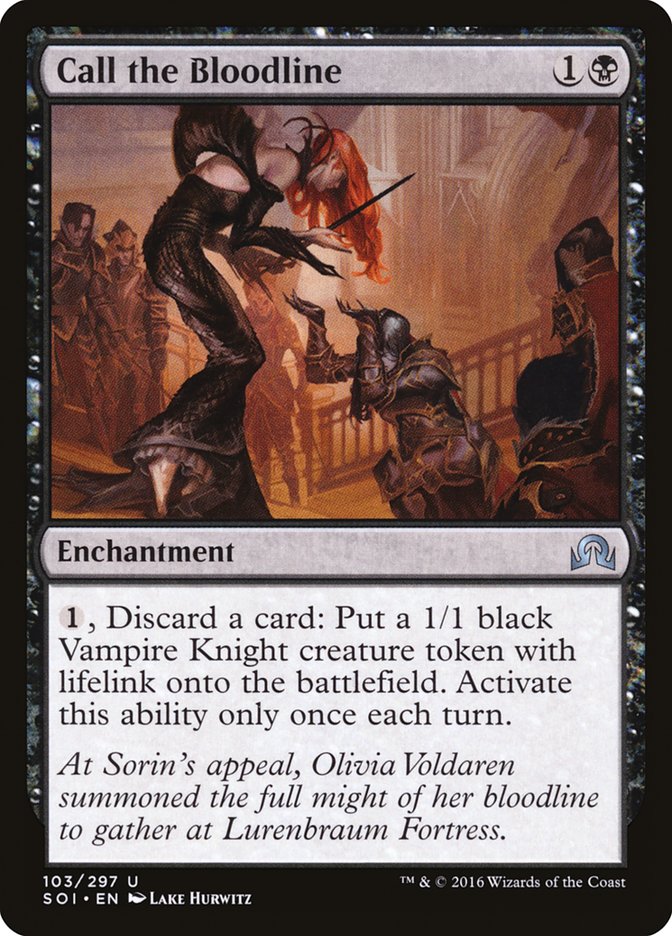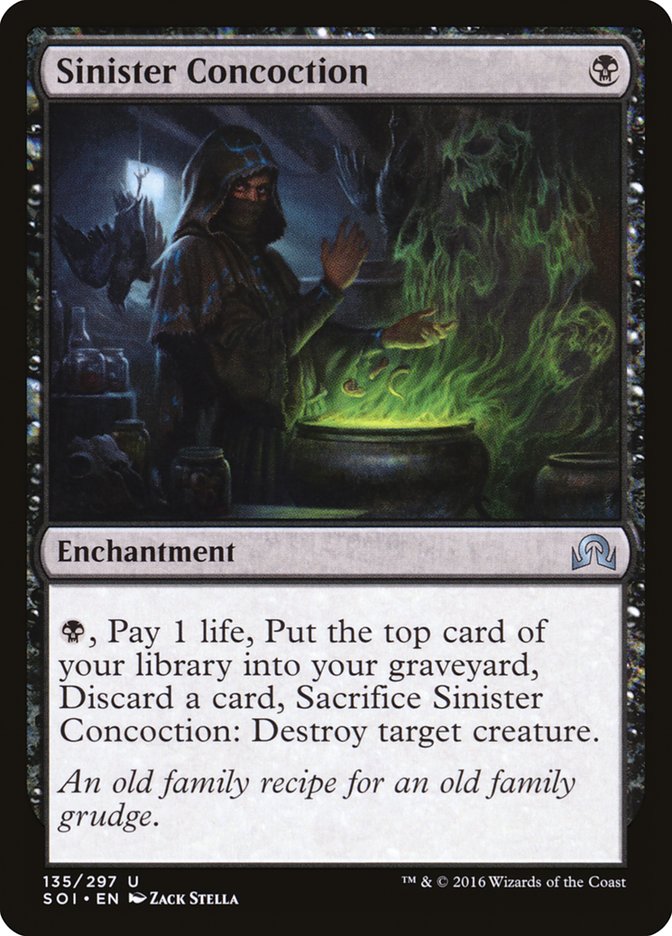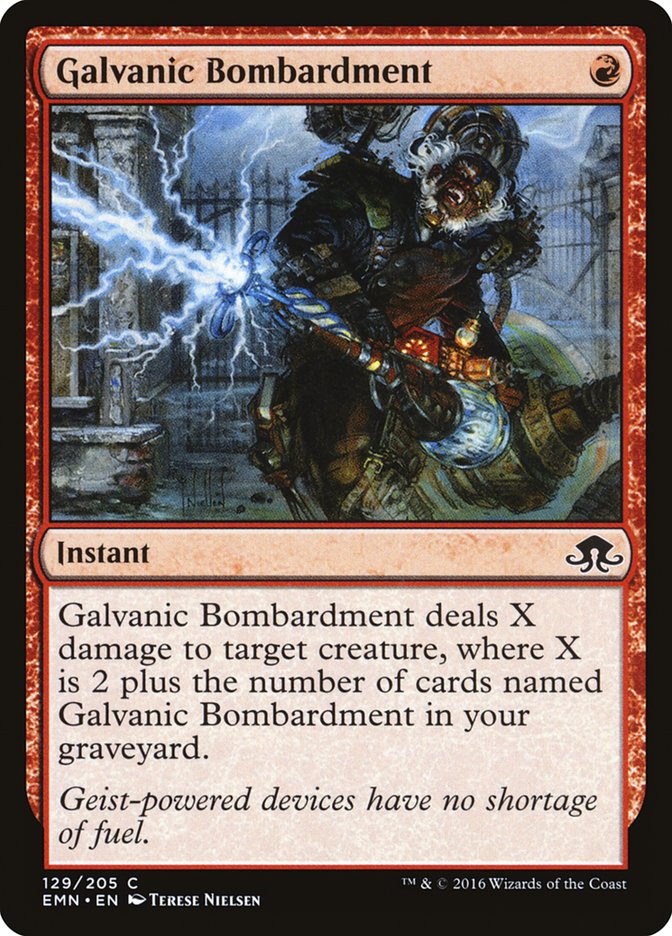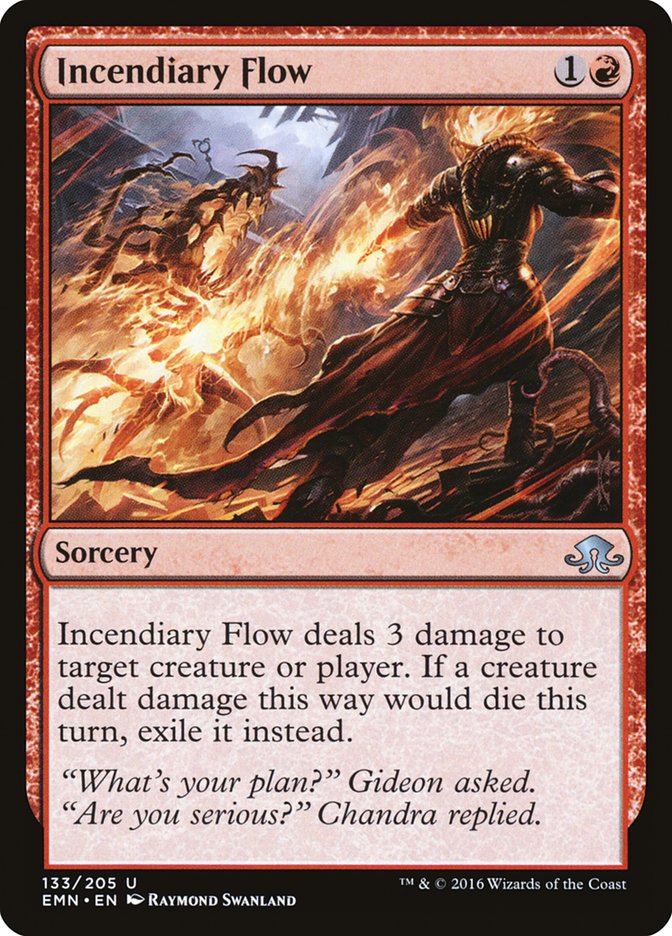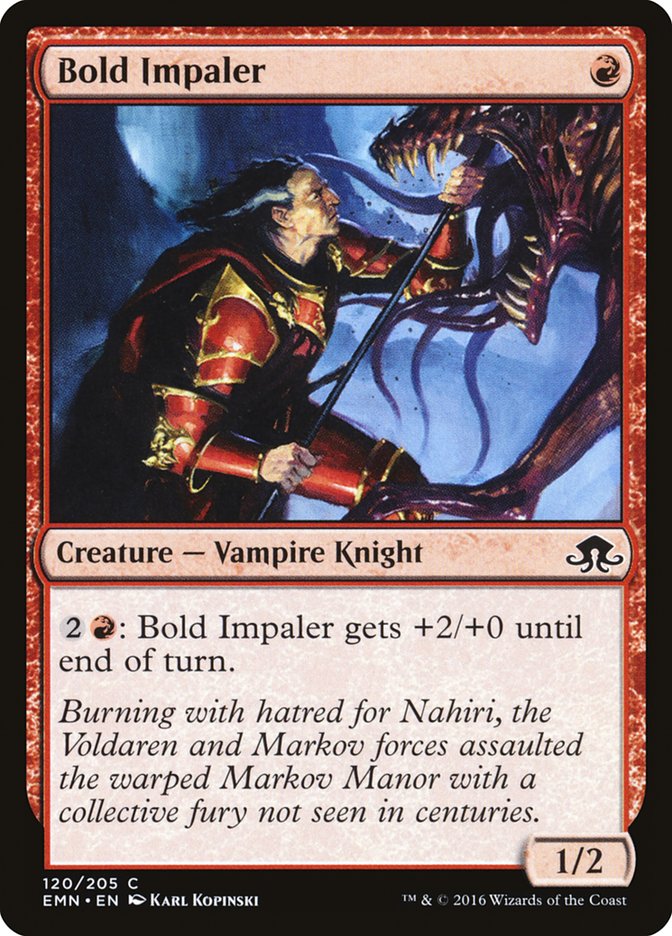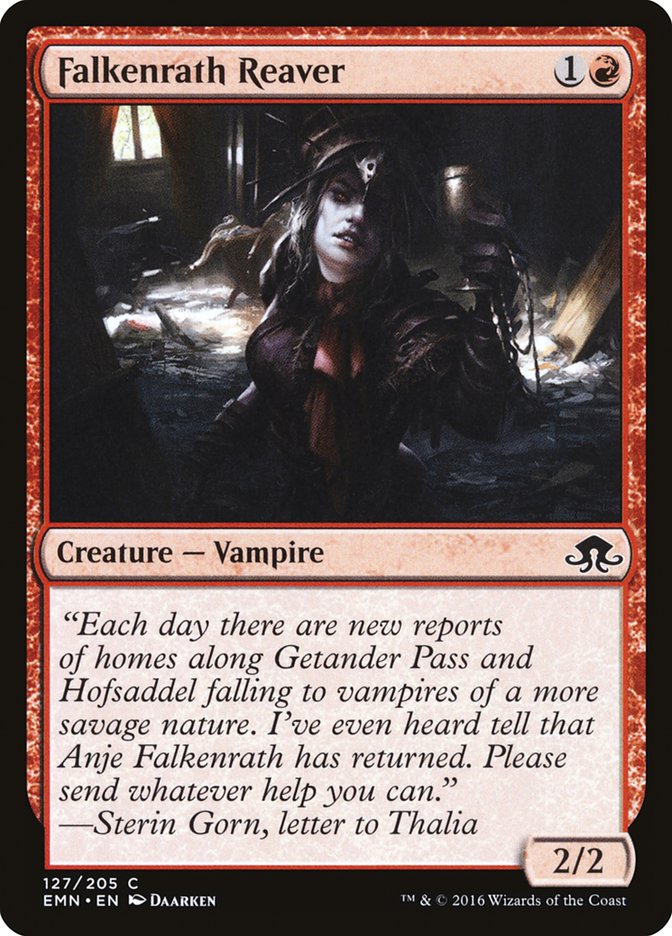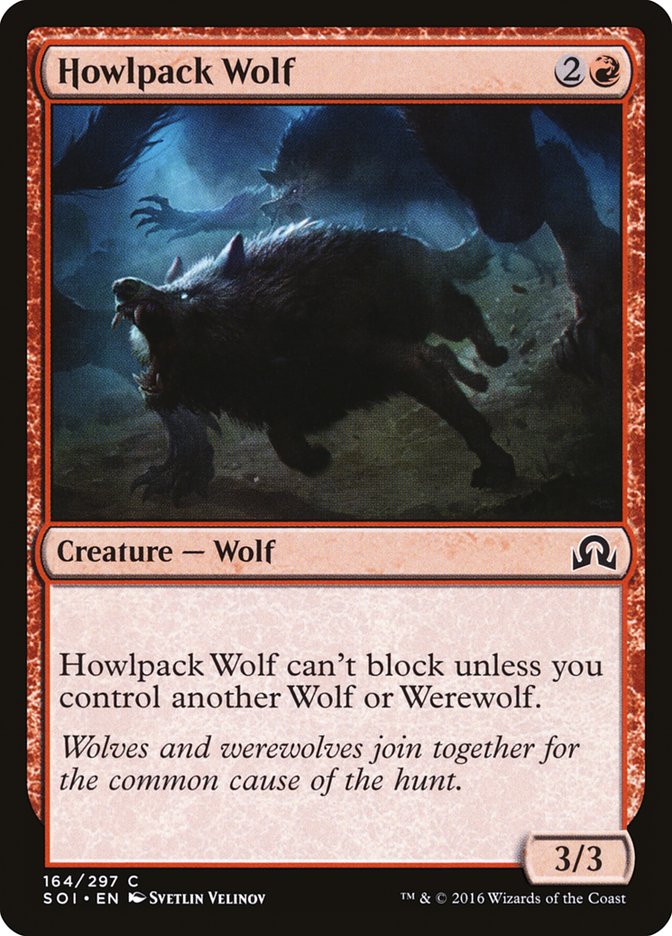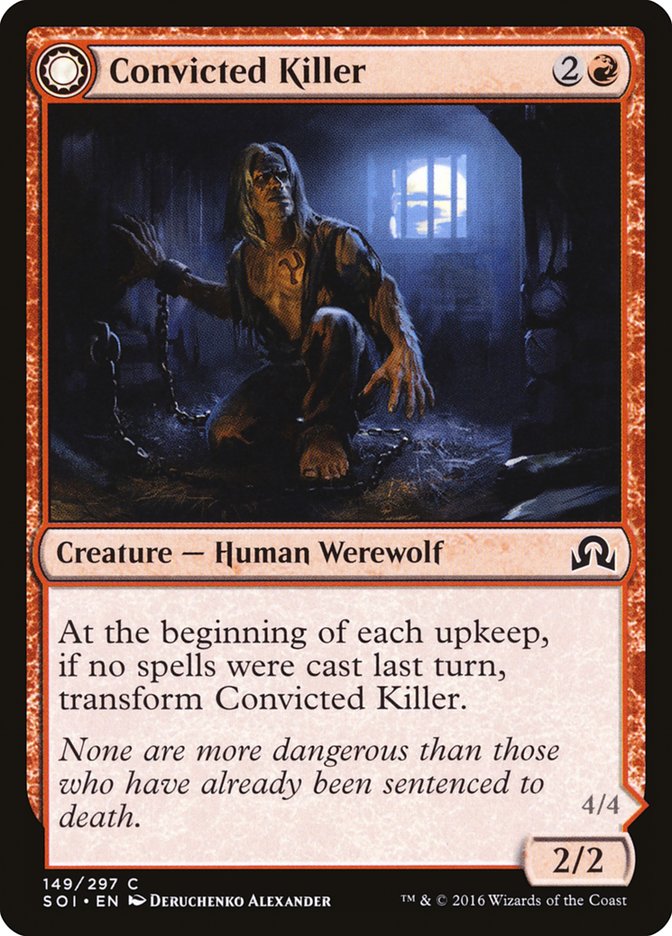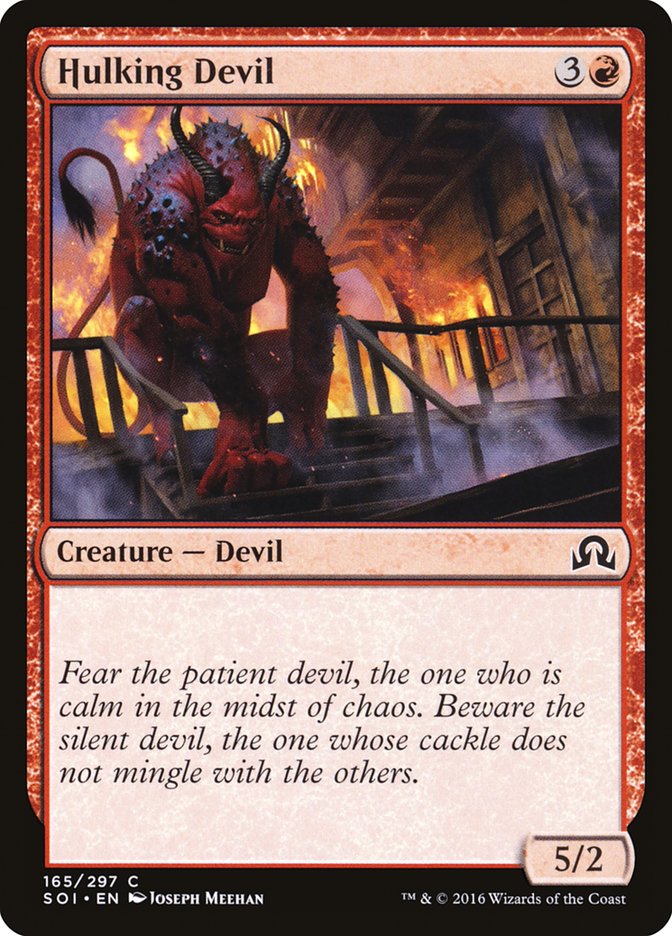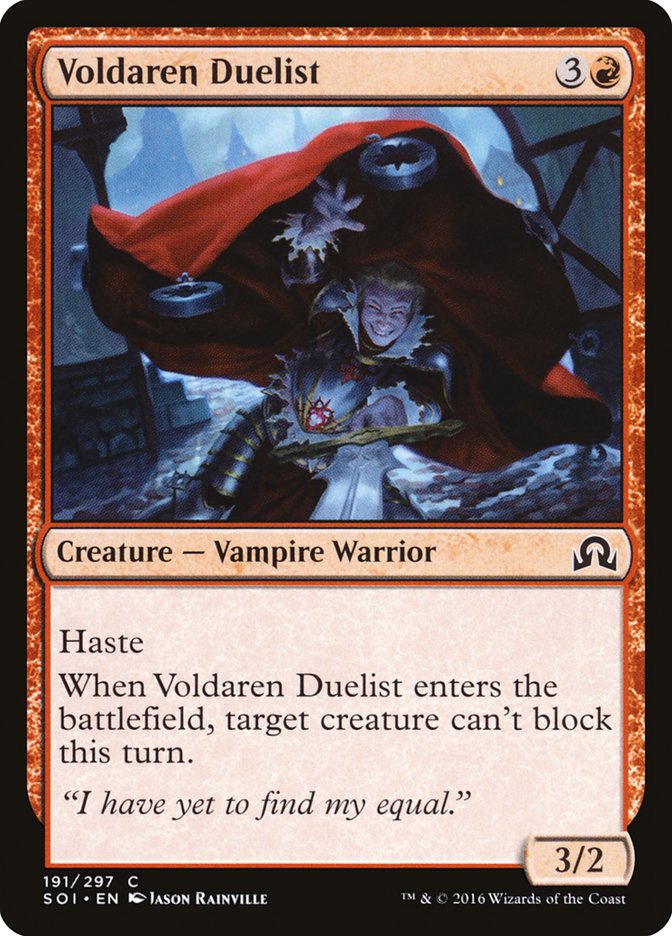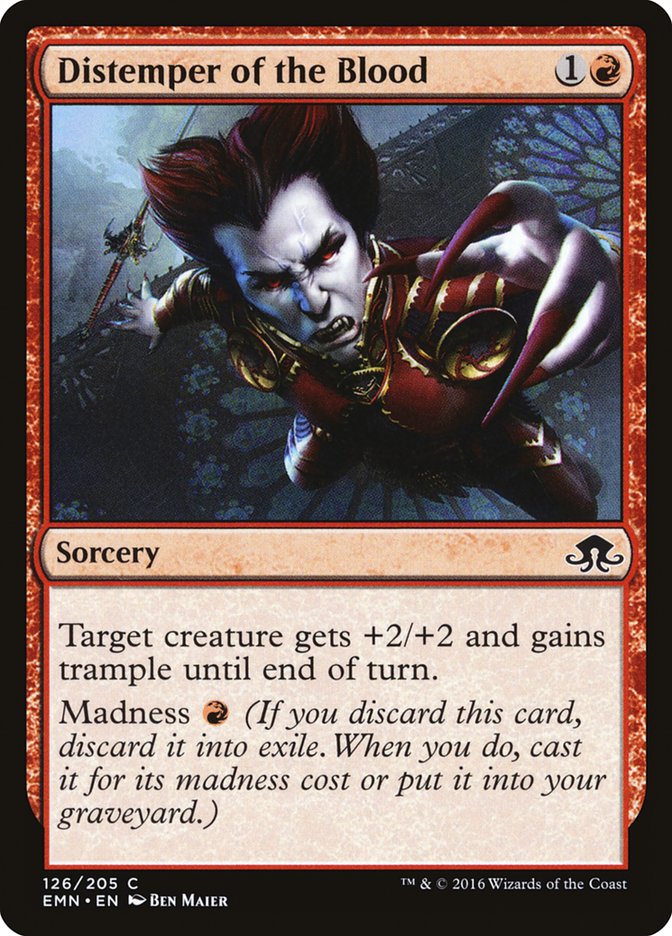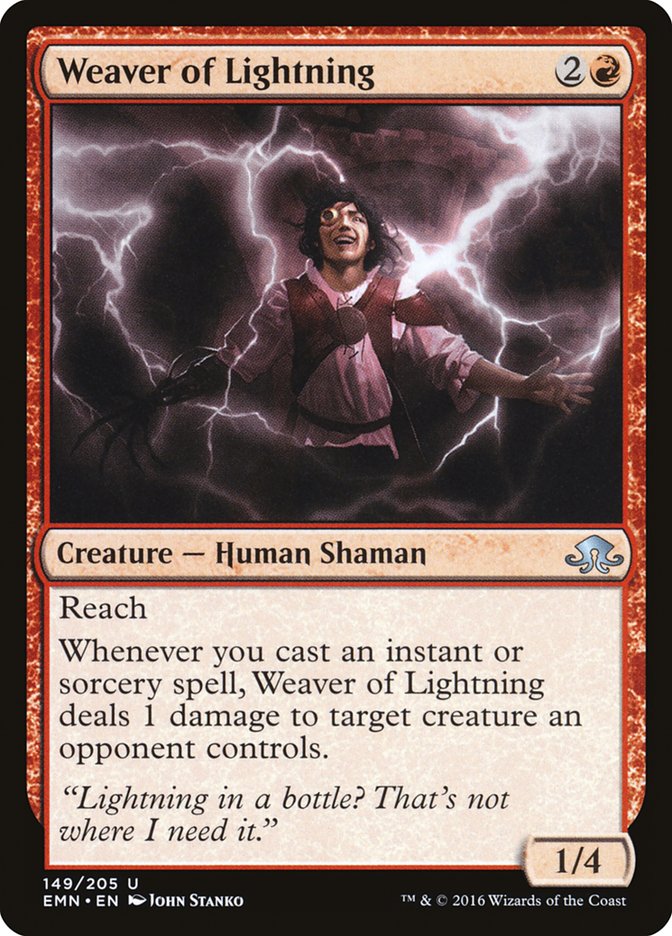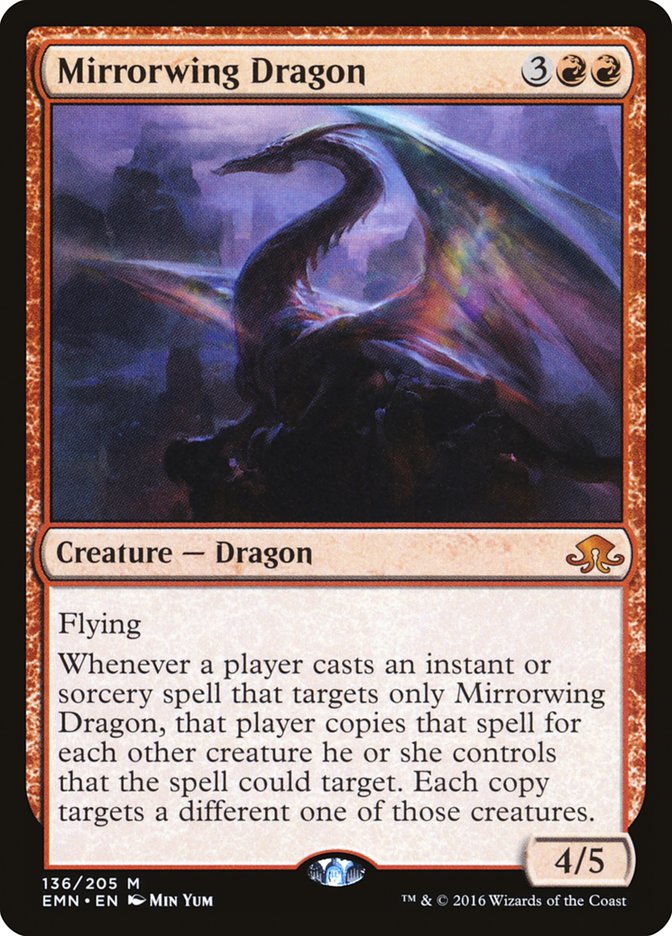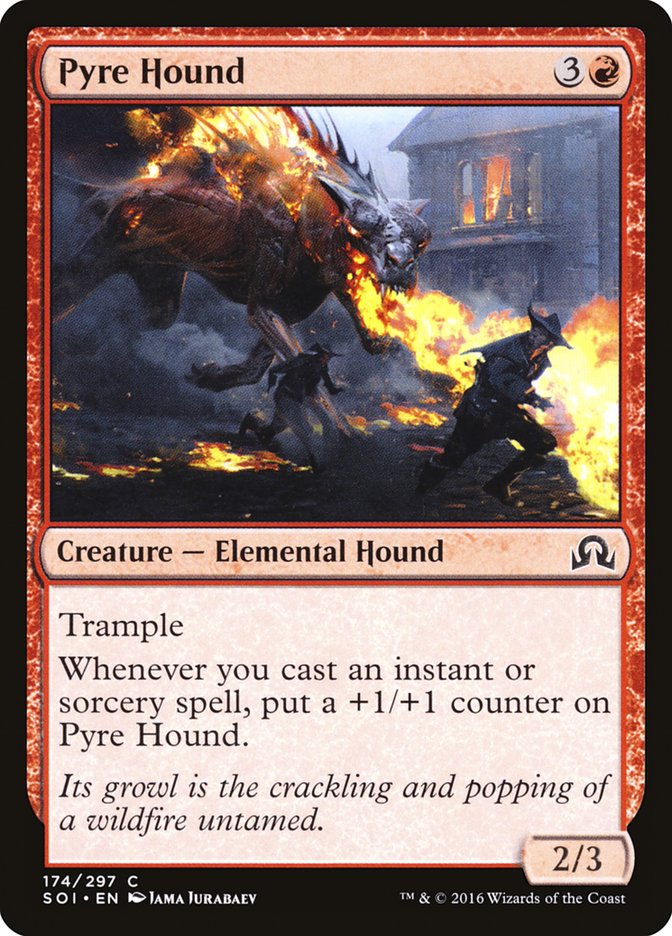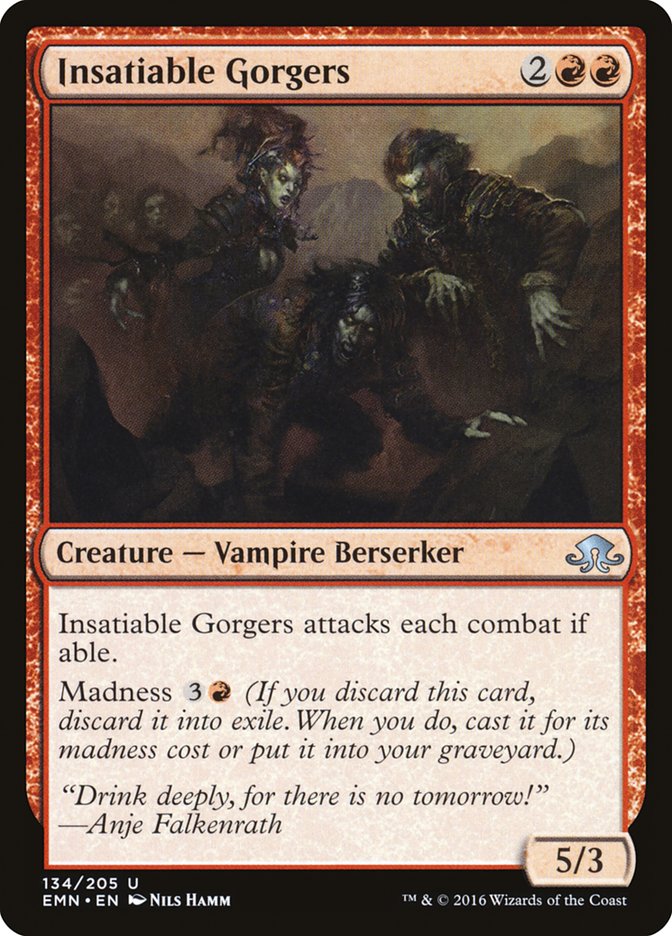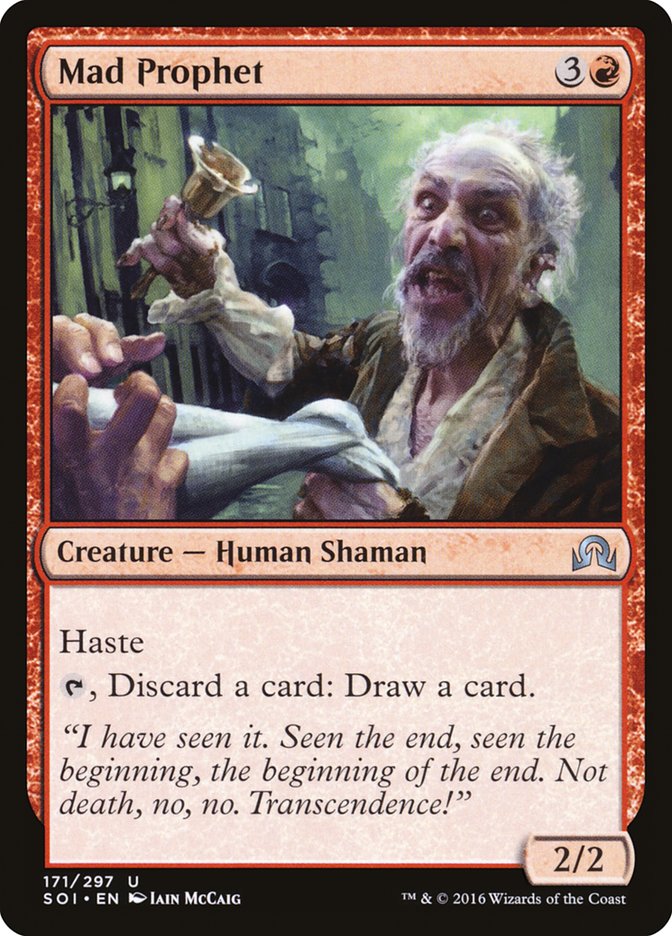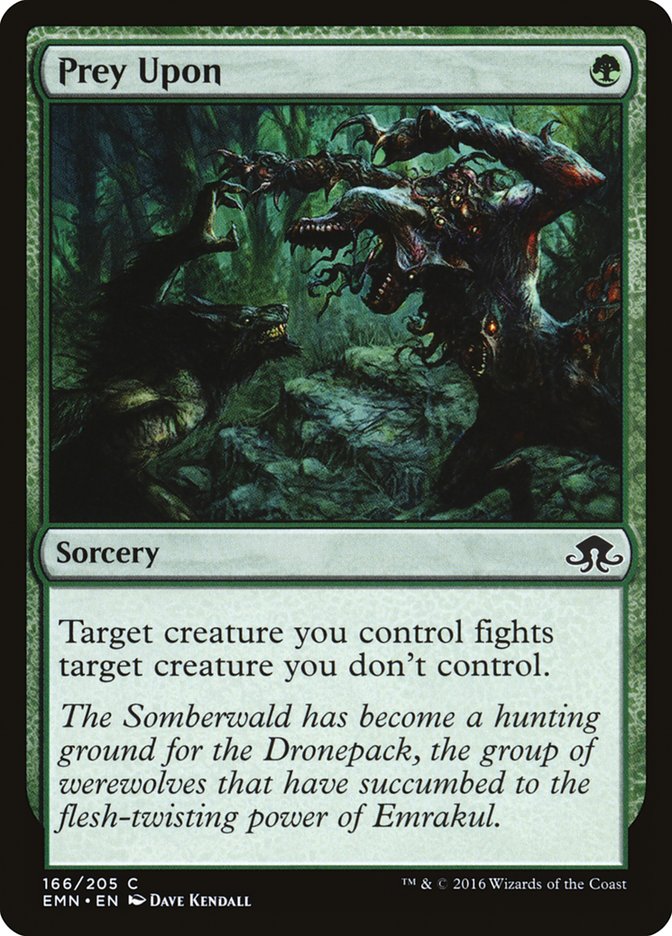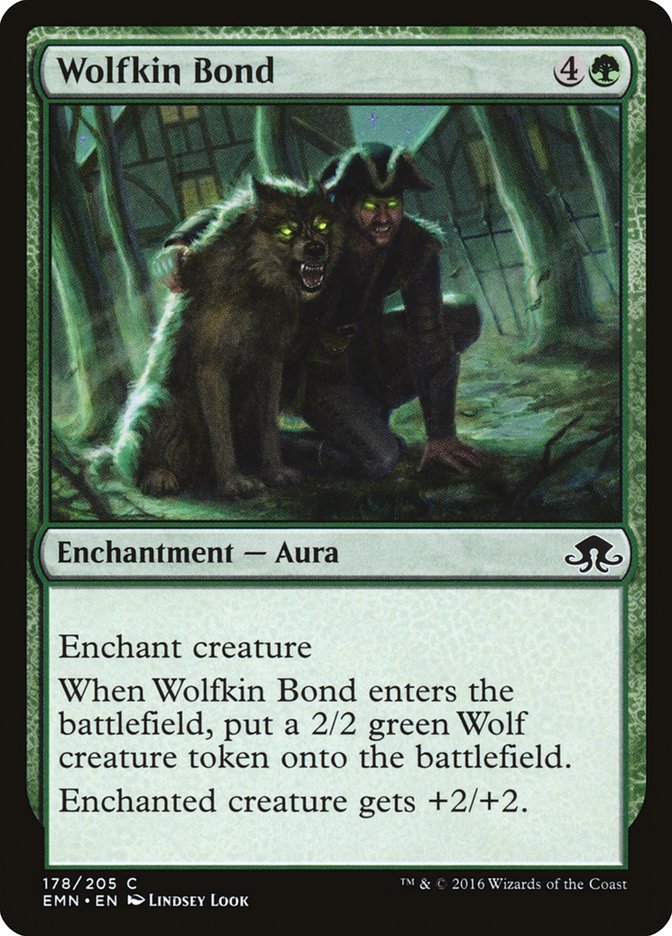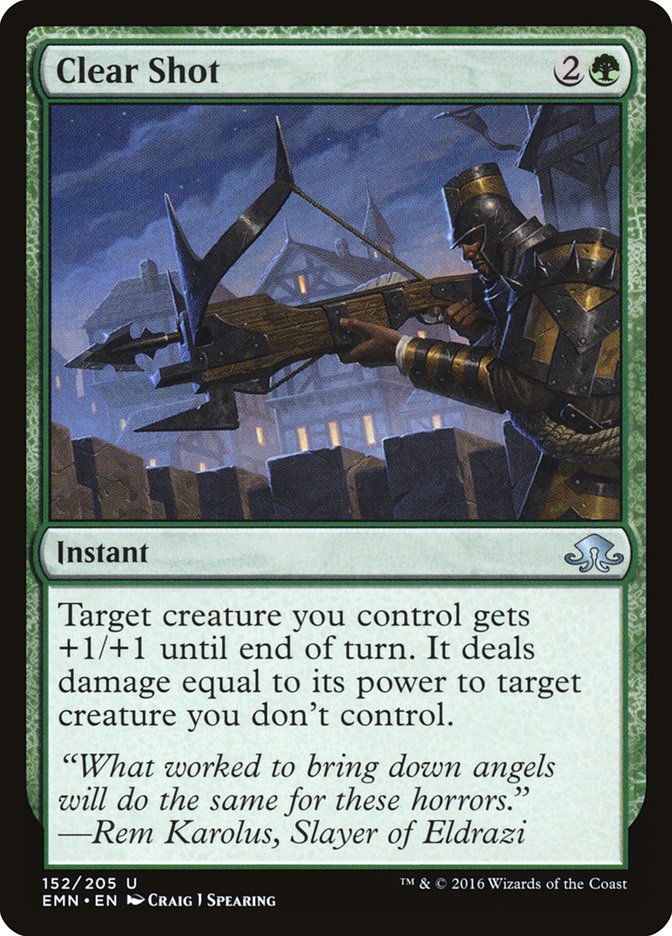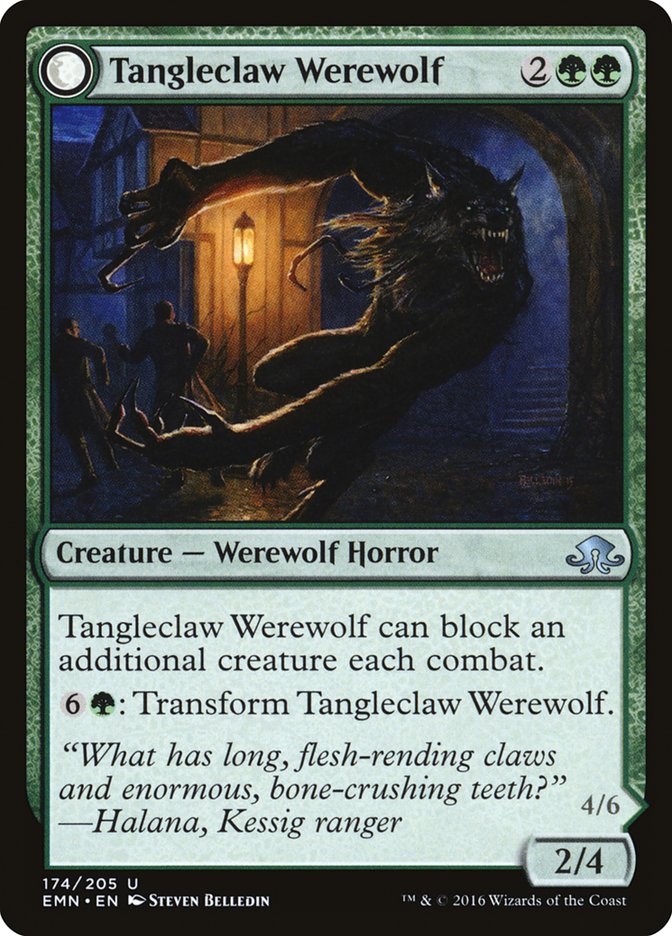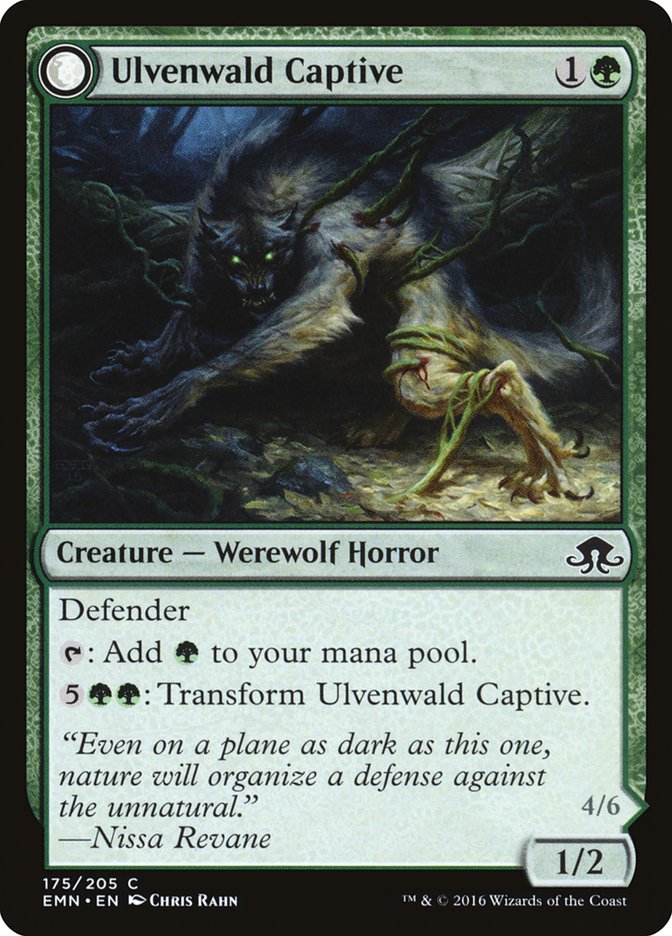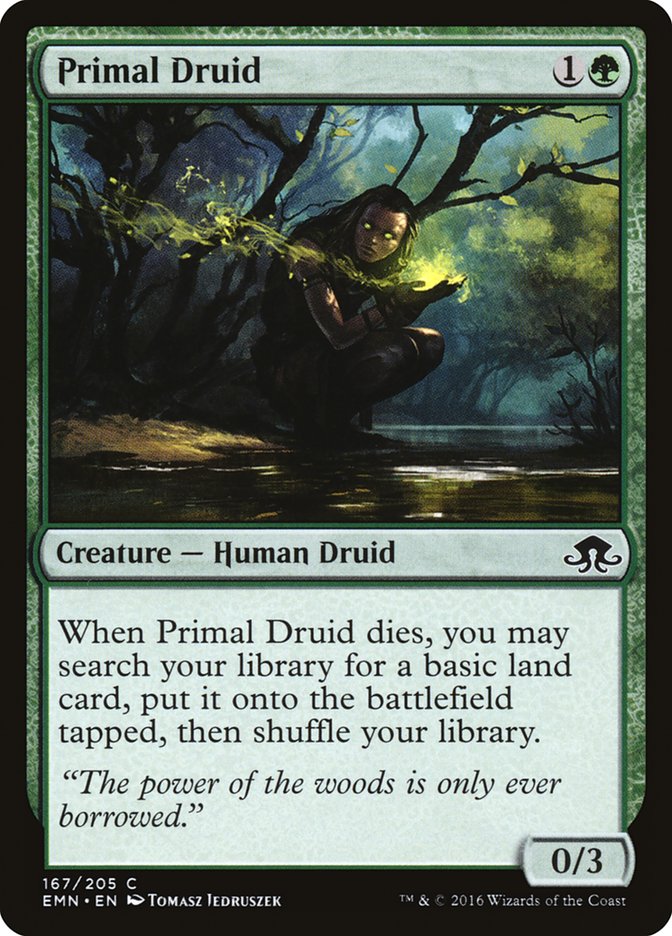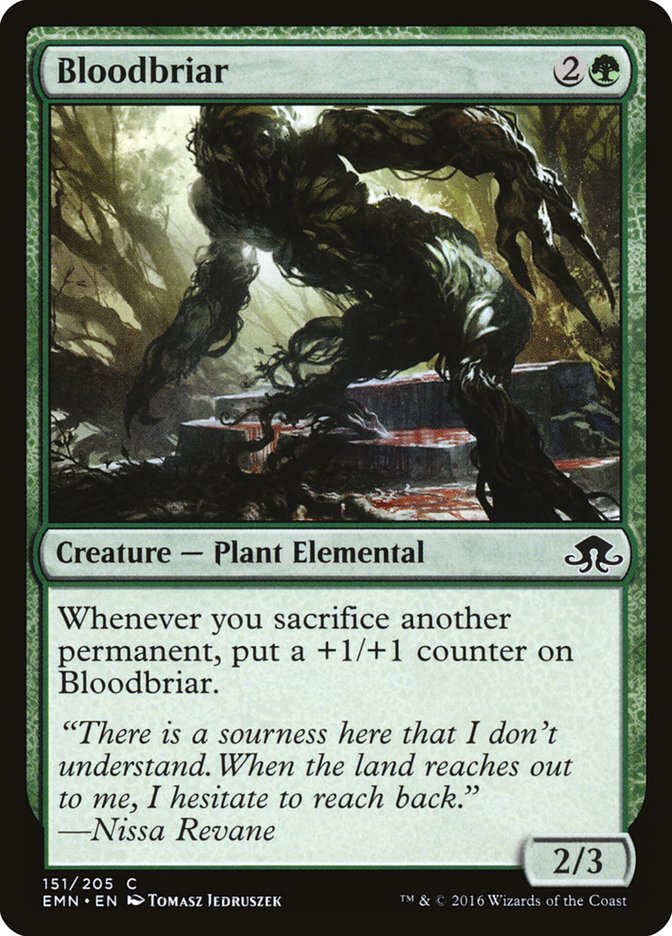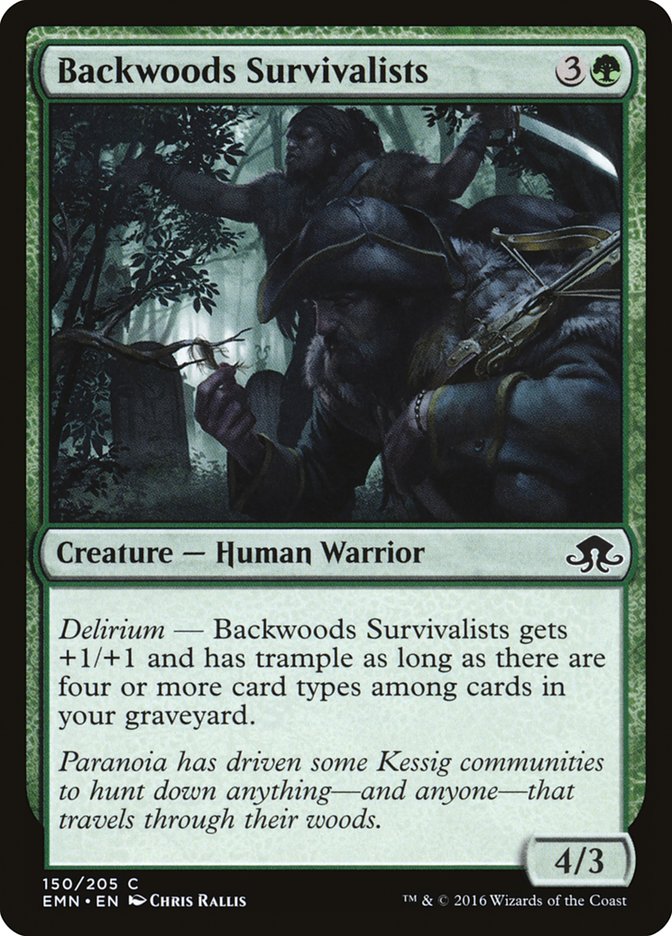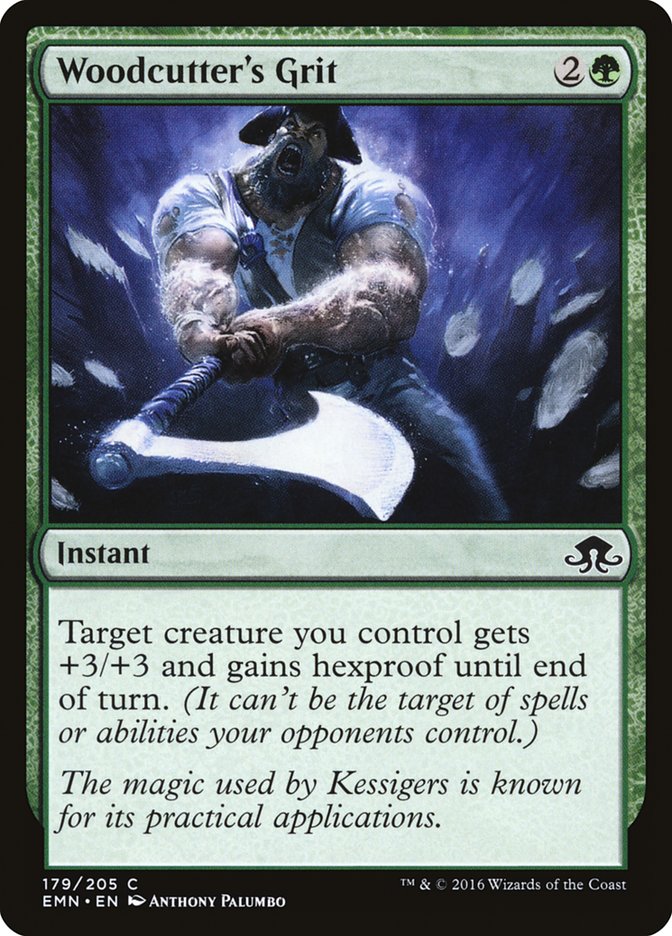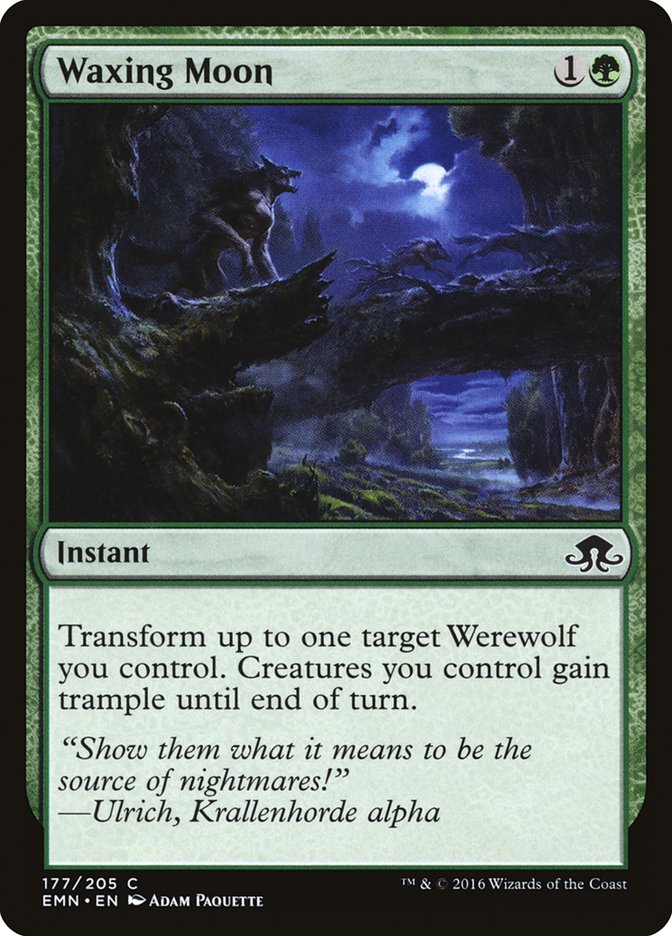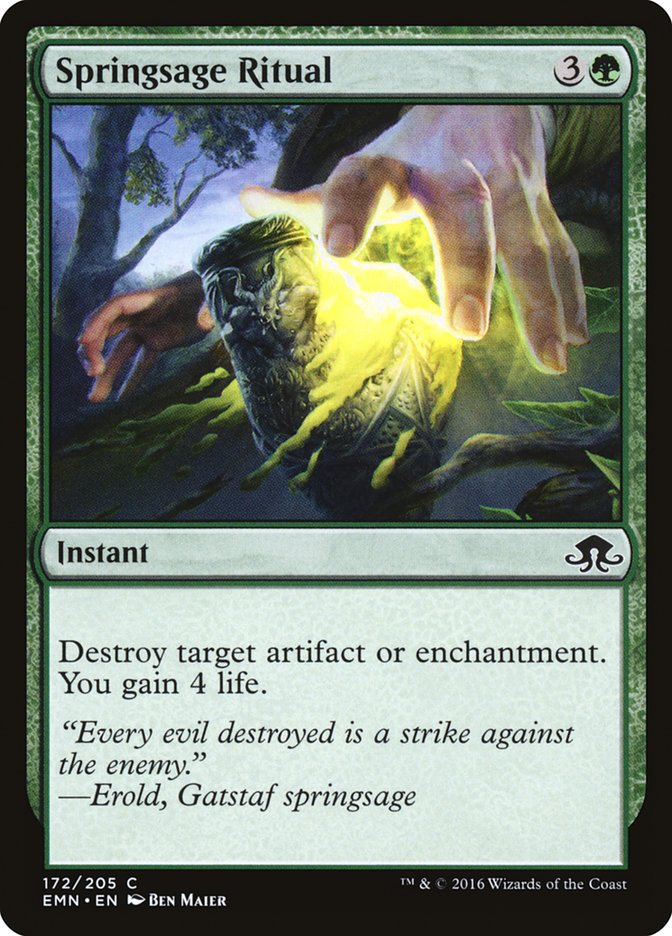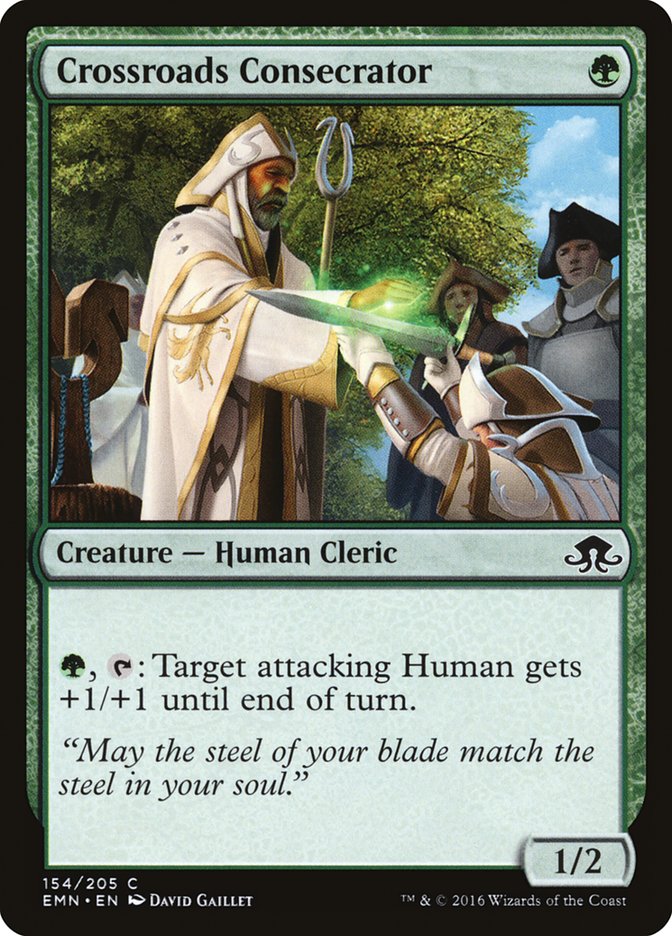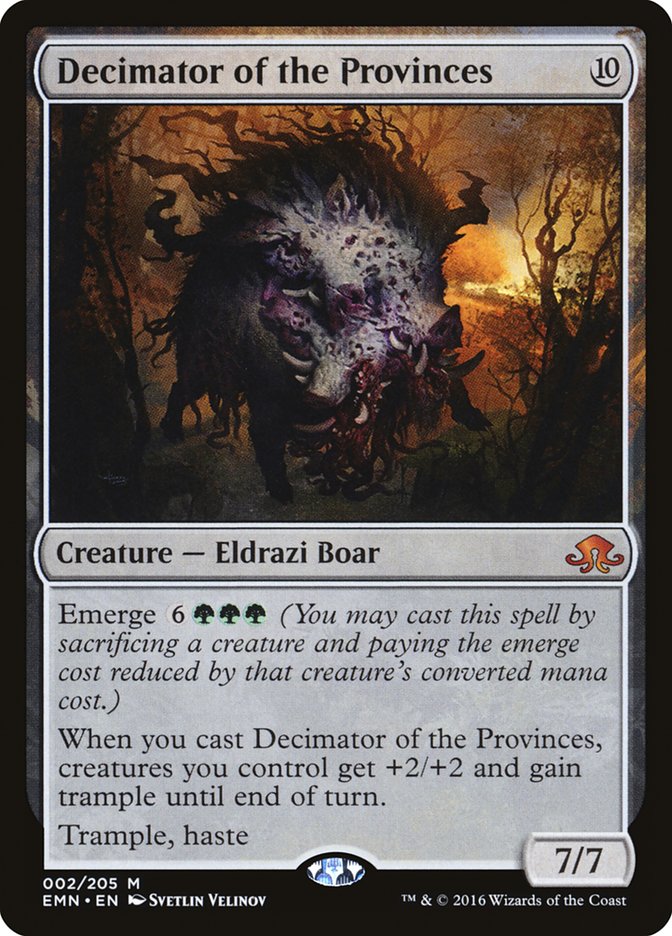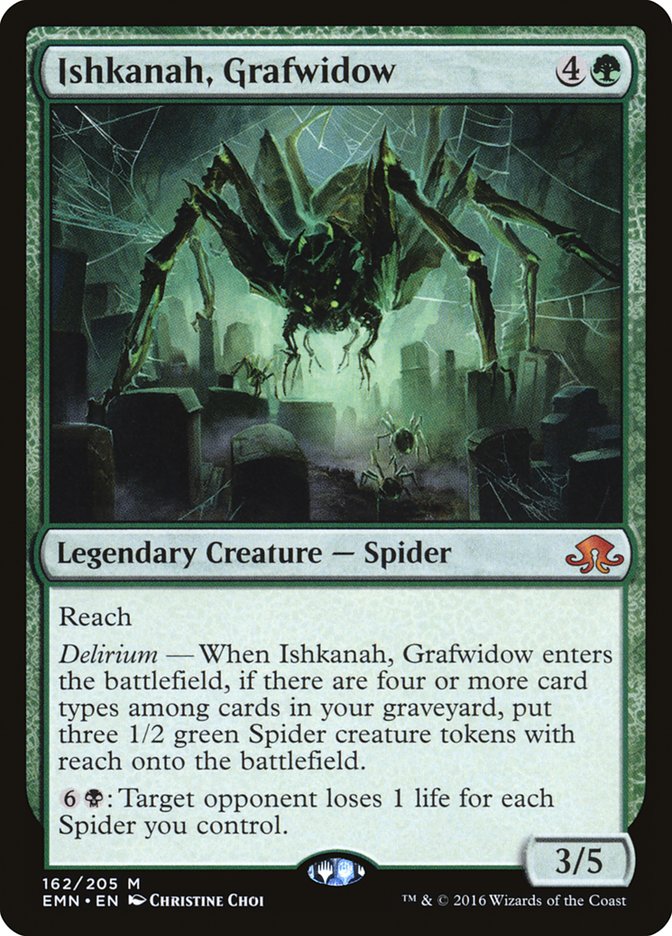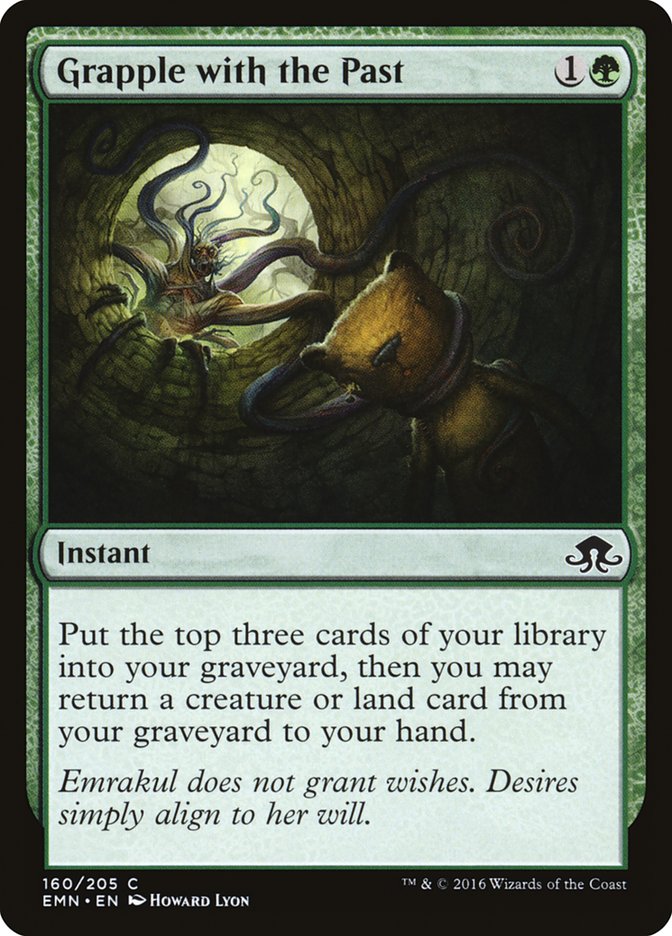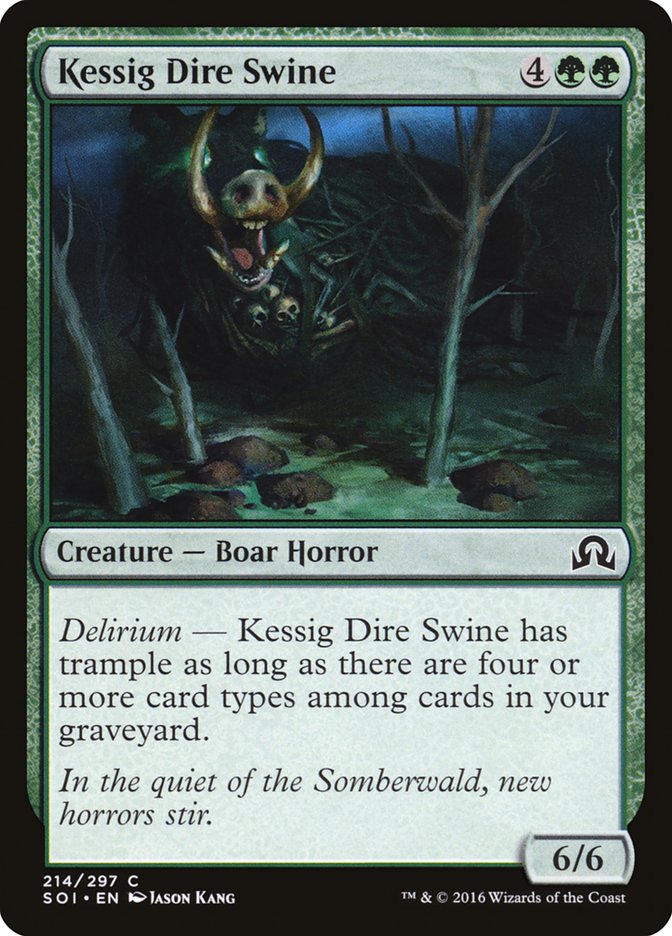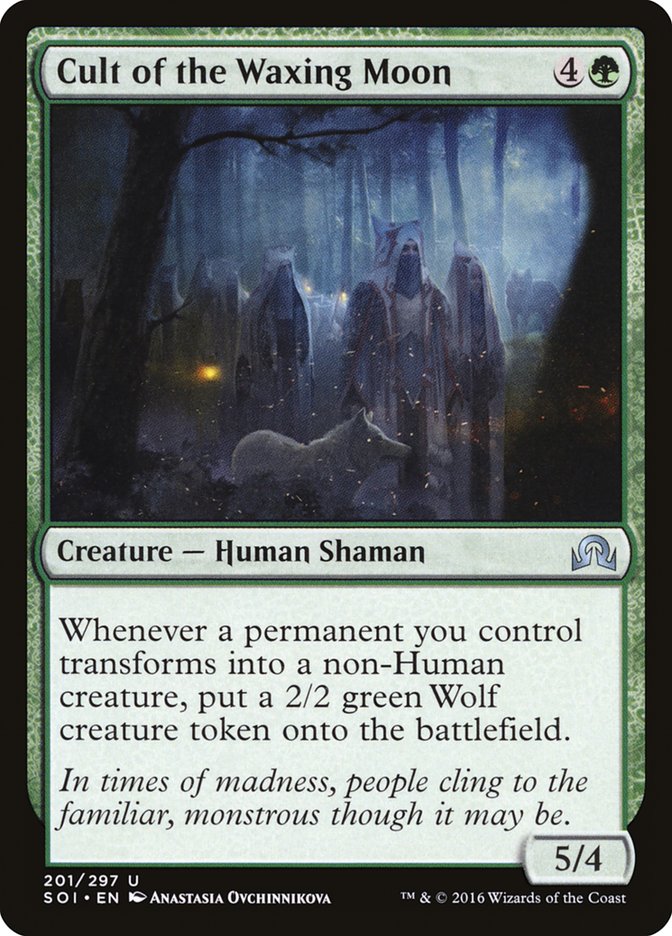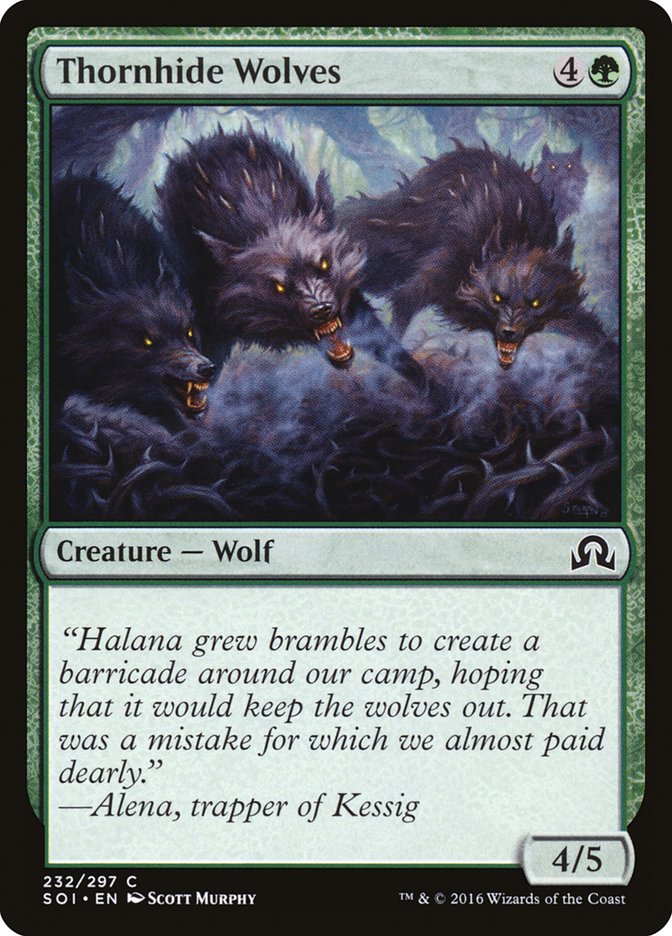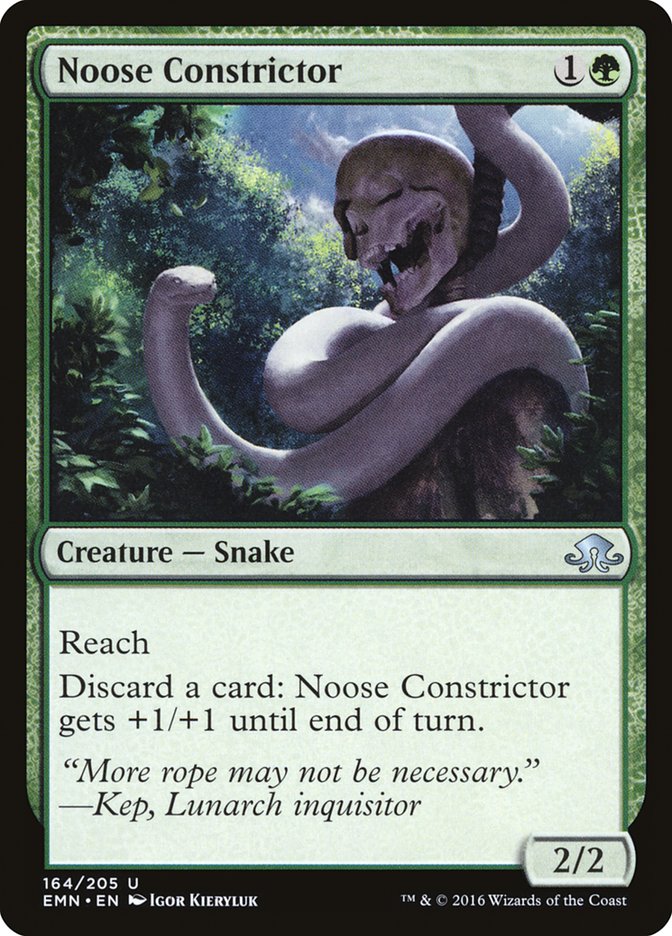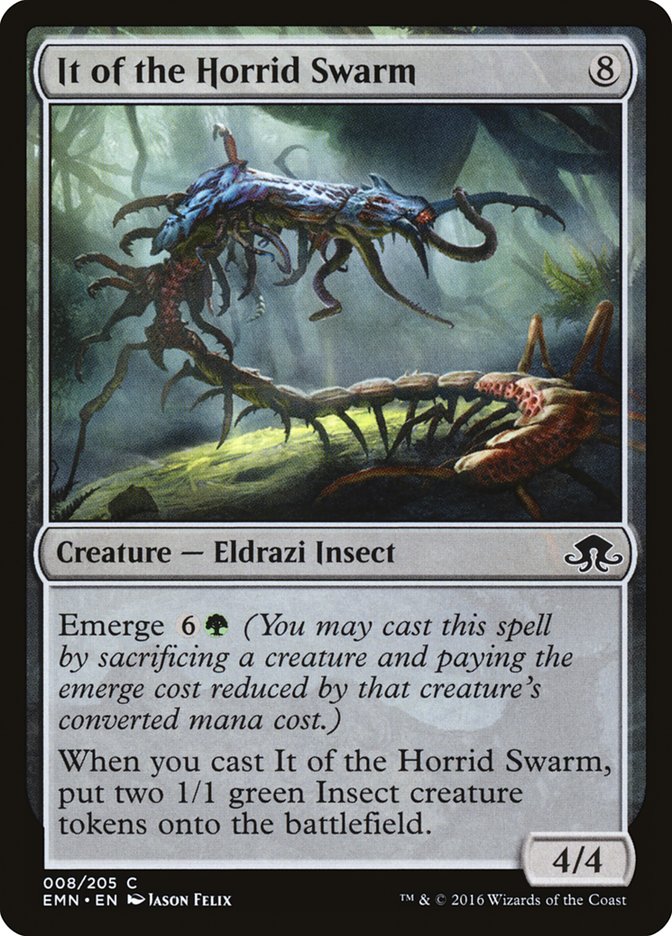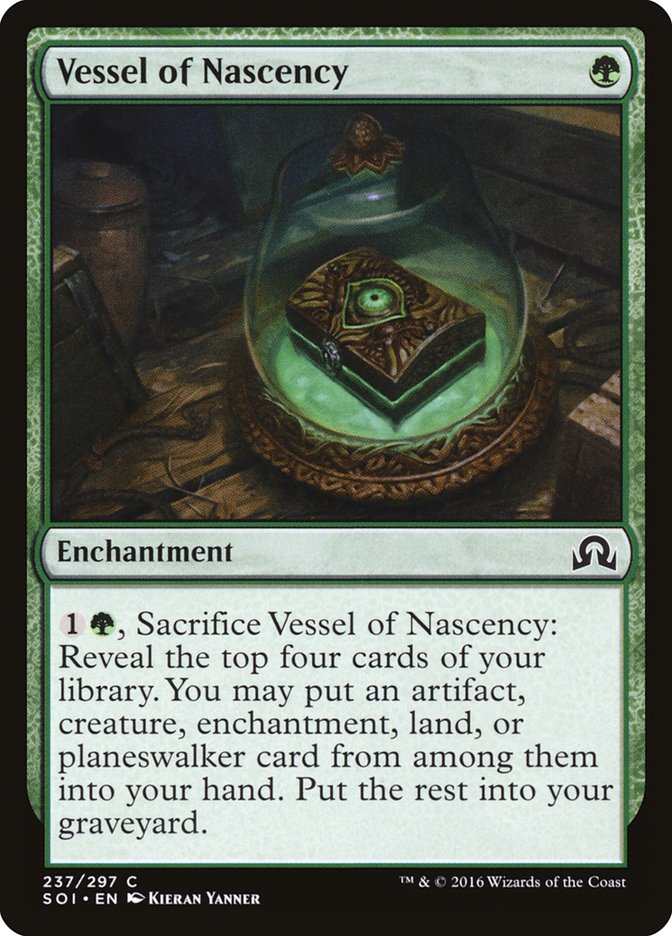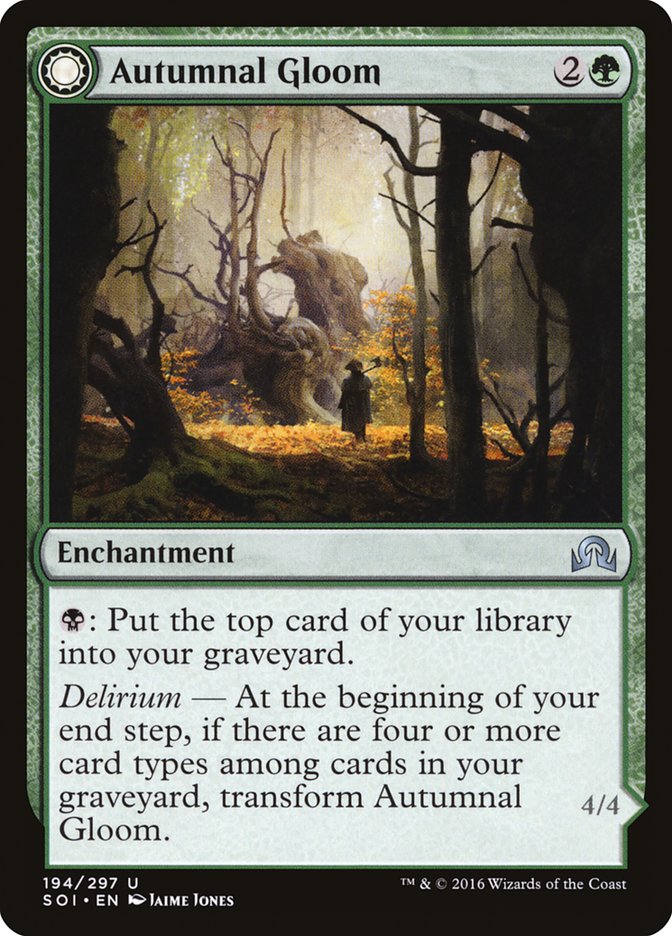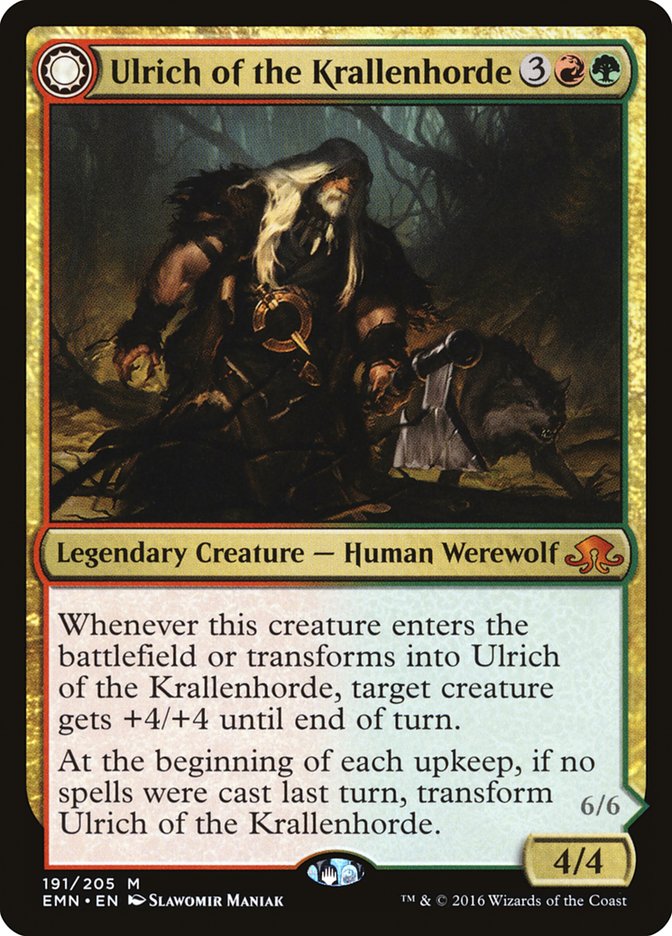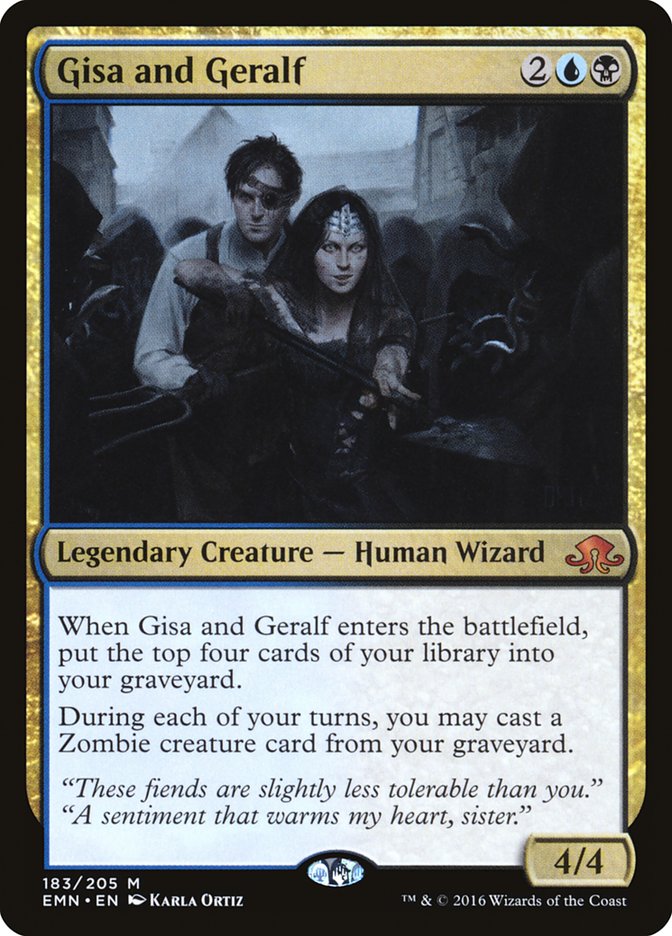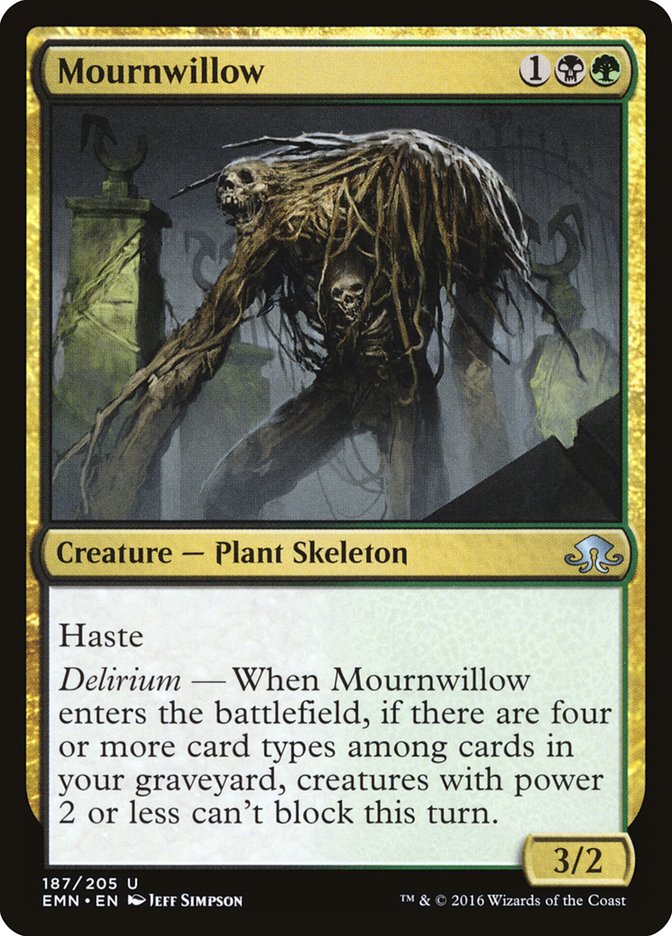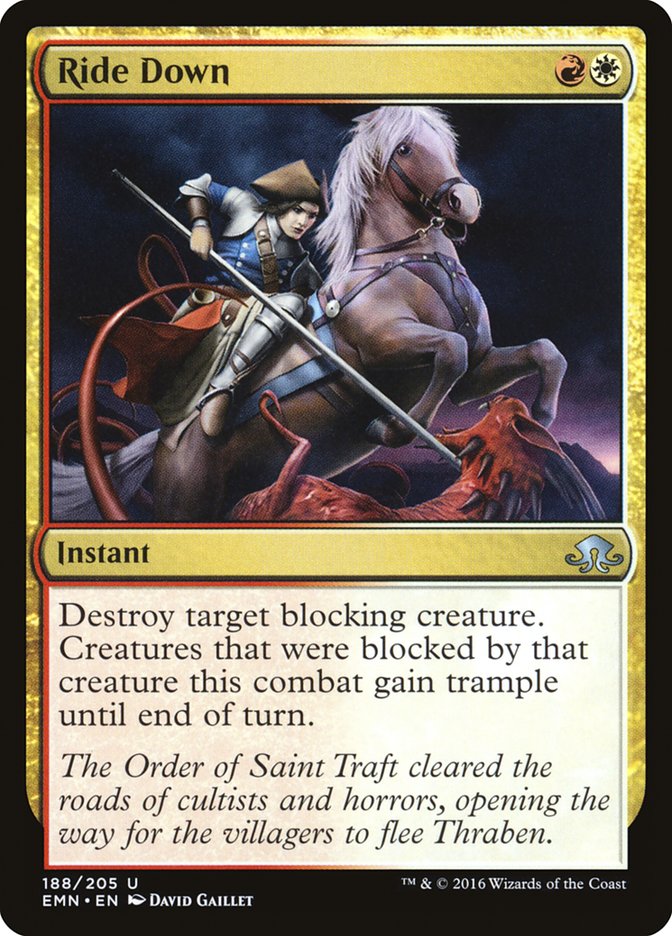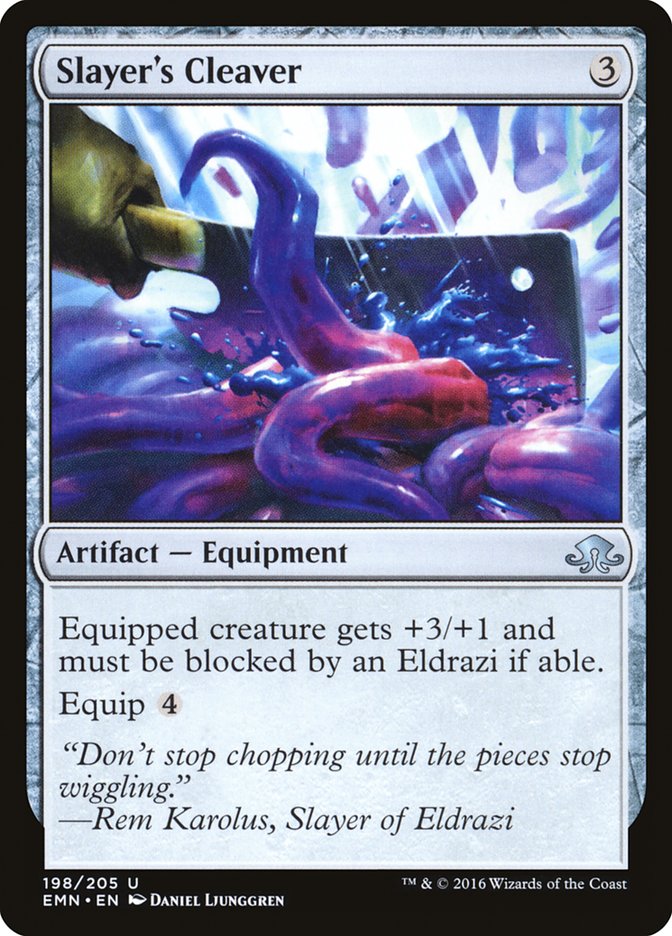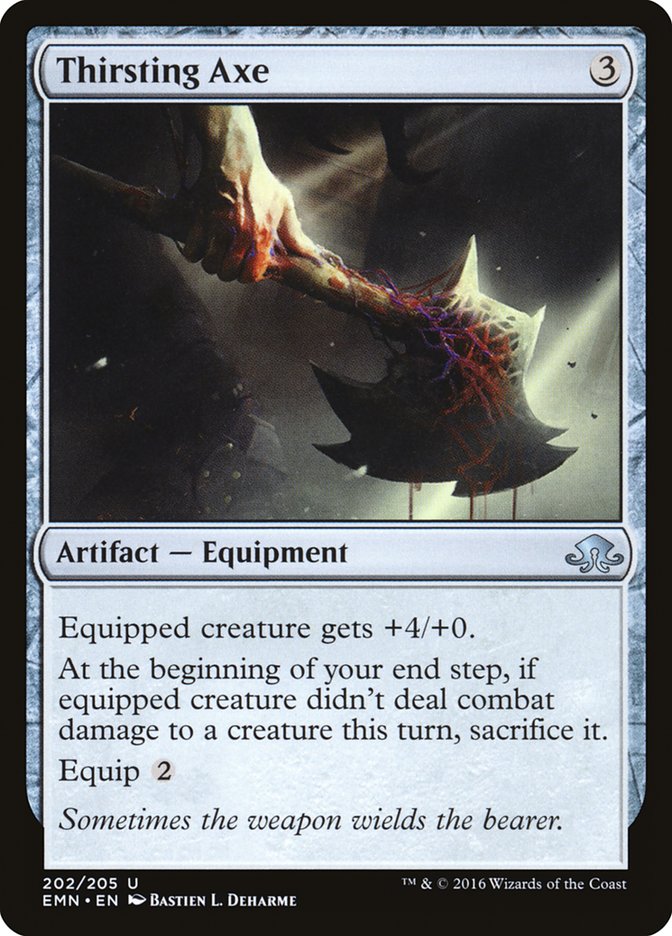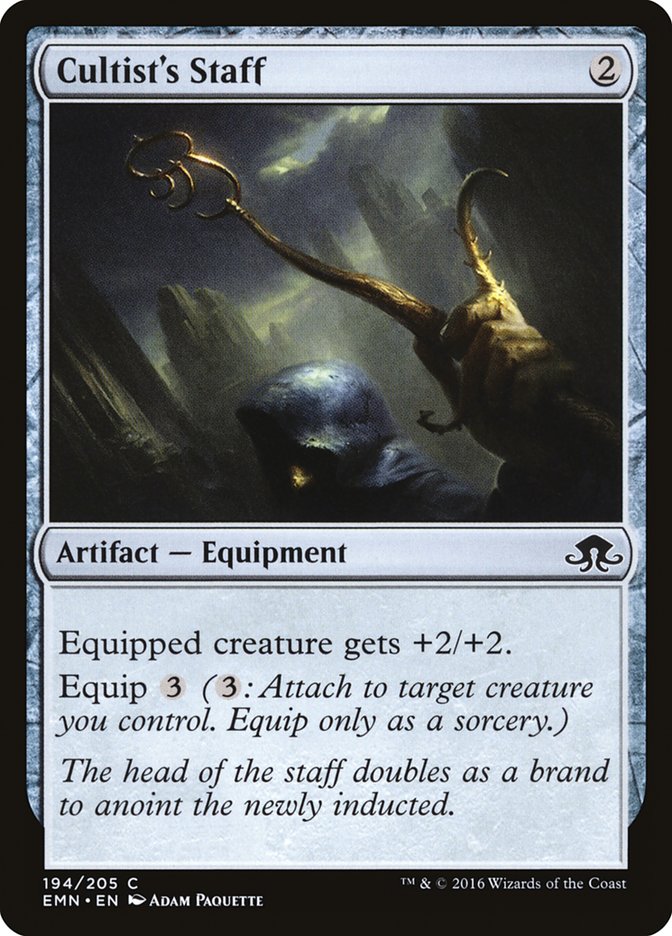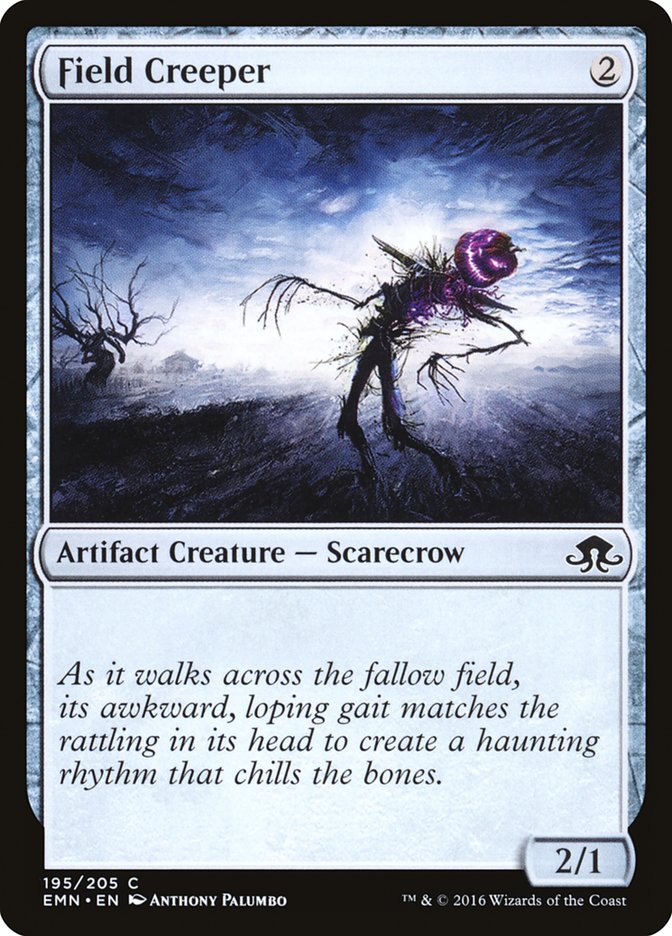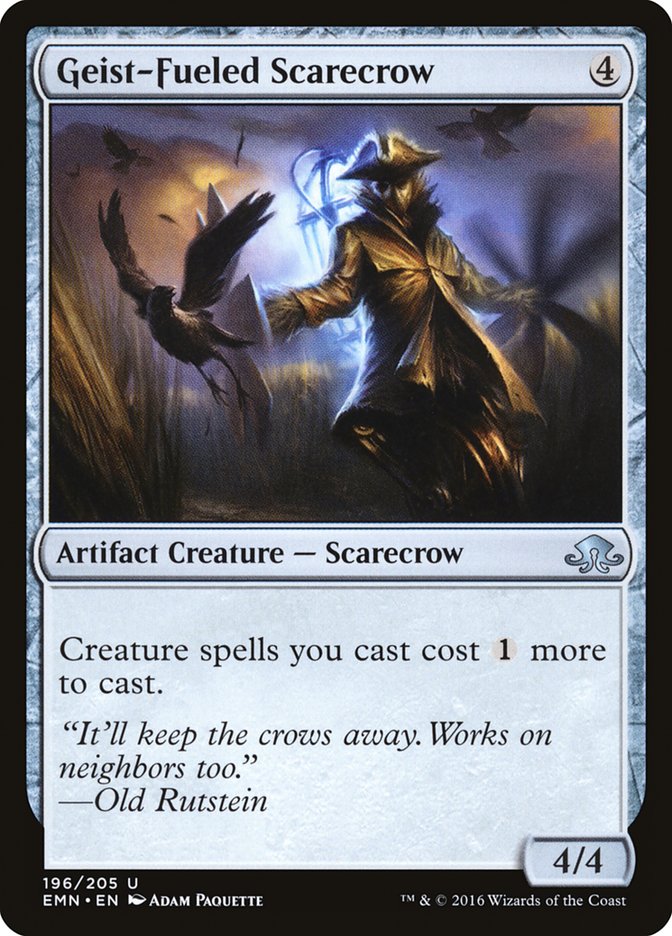Today’s goal: answer a few key questions about Eldritch Moon Limited:
What do the mechanics do to my decks?
What cards do I want to be first-picking?
Are there any holes or flooded slots on the color’s curve or spells? How does this shift between sets?
How does the color play to the set’s themes?
How do the rares line up for the color?
What are the cards I think will be under- and overvalued?
What old cards have shifted similarly?
Mechanics
Emerge is basically an Aura that kickers up to an overcosted creature. These creatures are two-for-ones, but they are too expensive to expect to hard-cast and bury your opponent in cards. Mainly evaluate them as Auras with appropriate costs and benefit. Is 3U worth upgrading your two-drop to Wretched Gryff and cantripping? What about 1U for upgrading your four-drop?
Werewolves switching to pseudo-monstrous is good with old Werewolves as you can spend a no-spell turn transforming the new ones. They also represent mana sinks, which tend to play better than they look.
Oh, look, another mechanic that lets you use extra mana…..
For those curious re: lack of investigate, when the large flying tentacle monster shows up, you can stop looking for the problem. It's that.
— Matt Tabak (@TabakRules) June 27, 2016
The Shadows over Innistrad mechanics are very muted in this set. There is no investigate, no Werewolf spell counting, and the cards with madness and delirium are much less powerful than last set. This means the cards from Shadows over Innistrad are going to want these abilities to be incidental bonuses on playable cards, not big swings.
Note that delirium wants you to sacrifice lands, while madness links to discard outlets that turn extra lands into fuel. With three new mana sink mechanics rewarding you for having extra lands on the battlefield, this gets harder to pull off effectively. Another strike against the old abilities. Investigate on the other hand draws more lands to fuel your big effects. Just don’t overload on mana sinks or you will be stuck with too many flexible but overcosted effects to use.
Also note that emerge and Werewolves are very non-linear. Eldritch Moon is normal Draft with splashes of themes, not the Shadows over Innistrad synergy-fest.
Meld is a one-of mechanic in Draft as the other pairs are all rares or mythics. Midnight Scavengers looks solid, while Graf Rats is filler. This is a huge reason to think about double-faced cards at the table mid-draft. This meld pair loses value quickly as people fight over them, so staking your claim early when the payoff is there sends a strong message. Also realize a Midnight Scavengers opened on your left Pack 1 it isn’t wheeling around to you, but one to your right might come if you snap off another early. If one half of the pair isn’t opened, make sure you change your valuation of the other half to match.
White
Commons
Converted mana cost 1
2
3
4
5
Removal
Trick
Other
Uncommon
2
3
4
6
Removal
Trick
Other
Rare
Great
Good
Okay
No Thanks
Top Commons:
Pacifism variants are always good. Choking Restraints loses some to emerge but gains from Ironclad Slayer rebuying it.
Tappers are always great. Most fliers are Angels or Spirits and most big creatures are Werewolves or Eldrazi, so Sigardian Priest handles most of the best threats.
Top Uncommons:
Faith Unbroken is a huge tempo swing and handles anything. This will often play like Shriekmaw with haste, albeit with risk of a return blowout via bounce or removal.
In open games a giant flier is game-breaking. In stalled games a Falter is game-ending. Subjugator Angel is both in one card.
Curve and Sizing:
White creatures aren’t tiny, but they stay around three power or toughness. You need help to push through a 2/4.
White is heavy at two and three mana. This isn’t a real issue as this is lower on the curve and the bodies are all solid, so just consider if your secondary color has mediocre cards of the same cost and try to downvalue those if in white.
Note that Shadows over Innistrad has worse white two-drops, so the Eldritch Moon packs are very important there. It is also heavy on four-drops, so don’t worry too much about those Packs 1 and 2.
Spells:
There are only four white spells in Eldritch Moon (Spectral Reseves is a virtual creature). One is a first pick. One is sideboard fodder. One is a pump aura. The other is a pricey combat trick. This makes other colors and Shadows over Innistrad combat tricks increase in value as mono-small creatures isn’t a solid plan.
Mechanics:
White has no Werewolves, no emerge, Desperate Sentry and Extricator of Sin for delirium, and a low curve. Look for white to pair with Shadows over Innistrad delirium cards in black and green that promote lands going to th egraveyard. Also note that you may get late emerge and Werewolf cards in your second color from people who already have too much to do with their mana.
Rares:
White’s rares are slightly above average, but not insanely so like last set. A couple of bombs like Gisela, the Broken Blade; lots of “worse than Murder but good” like Selfless Spirit; a few bricks like Deploy the Gatewatch; and not a lot of average playables.
Sleepers and Old Winners:
Fortify was strong in Magic 2014 and Time Spiral. Borrowed Grace is the same card with a bonus “game over” mode. Note it is an instant unlike Ethereal Guidance.
Inquisitor’s Ox was previously filler, but 2/5s are now massive and a 3/5 vigilance is a real threat.
Open the Armory’s previous flaw was not having good default targets. Now Open the Armory for Choking Restraints is “playable removal” efficient at five total mana and on color.
Traps and Old Losers:
White is short on combat tricks. With few +2/+2 effects, Lone Rider doesn’t have enough ways to gain three life without playing trash like Chaplain’s Blessing. It is busted if it does transform, so this may become an Invisible Stalker situation where the card is either unbeatable or unplayable depending on deck and draw.
Shadows over Innistrad had a lot of keyword creatures to make crazy Odric, Lunarch Marshal setups. Eldritch Moon uses its complexity on new keywords and is light on cards like Rancid Rats. Please ignore that I just talked about Lone Rider, which is basically the perfect card for Odric.
Summary:
White is a solid color with removal and bodies. It uses Shadows over Innistrad delirium well and glues together powerful cards in another color that gets cutoff and is short. It is lacking in game-winners and game-breakers and solid spells and will fail to close games if you don’t find those.
Blue
Common
2
3
4
7
Removal
Trick
Other
Uncommon
2
3
5
8
9
Trick
Other
Rare
Great
Good
Okay
No Thanks
Coax from the Blind Eternities
Unknown
Top Commons:
I always liked Watercourser, and Ingenious Skaab has a big upside. The prowess jump to 3/4 is big in a 3/2 and 2/3 set.
Exultant Cultist is Byway Courier in a color with worse other creatures. It trades well and cantrips on top of being an obvious emerge enabler.
Top Uncommons:
A 3/4 is near-unbeatable, and Advanced Stitchwing is also hard to keep dead.
Grizzled Angler’s self-mill is a strong enabler, and Grizzled Anglerfish is huge and breaks open games after you eventually transform into it.
Even outside of U/W, Nebelgast Herald is similar to a 2/1 flying Stitched Mangler, and in U/W, this card just shuts your opponent out of many combats.
Curve and Sizing:
Blue has similar sizing to white, which is pretty common. In this set, that means nothing huge but not undersized. The difference is emerge creatures to go over the rest of the 3/2 mess.
The problem I have with blue comes at two mana. In Shadows over Innistrad the blue two-drops sucked, and in this set they are both much worse when behind. This makes it hard to support a heavy blue deck as you probably need the second color on turn 2 to reliably to cast a creature.
Spells:
As always blue has a surplus of spells. As always there is a lot of filler or worse. This is not good, as it means blue is light on solid playables in both sets.
Mechanics:
Blue is heavy on good creatures to emerge from. Pair with green or black to ensure you have the right density of each piece.
Blue also has a decent self-mill shell, but not a lot of big payoffs. This feels incidental or the kind of deck you backdoor with Shadows over Innistrad payoffs and average cards from Eldritch Moon.
Rares:
Blue’s rare spread is similar to white. You aren’t going to have huge early fights over bombs, but starting with a first-pick blue rare isn’t an uncommon proposition.
Sleepers and Old Winners:
I criticized the blue spells, but the good ones are solid. In particular bounce tempos out emerge very hard and plays well against white’s aura-based removal by targeting your own creatures.
Drownyard Explorers is another defensive filler card that upgraded. In this case, leaving behind a Clue when sacrificed to emerge is the relevant bonus.
Traps and Old Losers:
Take Inventory is a “let it come back to you” card, not a “move in early” thing. Four or five copies is strong, but the average draft has two of each Eldritch Moon common. It also isn’t an “every deck” thing as it takes up lots of slots to spin your wheels.
Math for this: eight players, two packs of Eldritch Moon per player, eight or nine single-sided commons per pack is around 140 single-side commons per draft. At 70 single sided commons in the set, that’s two per draft.
Erdwal Illuminator was previously first-pickable, but two packs fewer of investigate means it won’t draw many extra cards.
Reckless Scholar was already overrated, but it loses madness and delirium synergy to highlight that it is just an undersized three-drop.
Summary:
Blue has a lot of the same problems it had in Shadows over Innistrad, but it isn’t quite as bad as before. Blue should not be a main color, but it’s a fine support.
Black
Common
2
3
4
5
Removal
Trick
Other
Uncommon
1
3
4
5
7
8
Removal
Other
Rare
Great
Good
Okay
No Thanks
Top Commons:
We don’t get a lot of Gravediggers at common because they make two-for-ones too easily. Midnight Scavengers had limits and can’t loop but still represents card advantage and a meld upgrade to a big threat.
This doesn’t kill emerge creatures, but almost everything else dies to Boon of Emrakul and it can level up if they block with a large creature. This compares well to the previous Complete Disregard.
Top Uncommons:
Kill a thing dead. Murder is the comparison I’m using to determine what a great rare is versus a merely good one.
That’s it. Black’s other uncommons are merely okay.
Curve and Sizing:
Black is not a lot different from white or blue. Same middling creatures, albeit slightly more defensive with 2/4 and 2/3 action. Your long-term trump is trading profitably in mid-size fights.
Remember black is loaded on three- and four-drops in Shadows over Innistrad and light on two-drops. In close picks, remember you can always find creatures for those middle slots later.
Spells:
Black has a solid spell mix: some removal, some card advantage, and a good spell-to-creature ratio. There is no need to bias towards spells or creatures in your picks until you already have enough cards to know what you are missing.
Mechanics:
Black doesn’t have a real mechanic, just two-for-ones. A couple of these are graveyard-related, making self-mill nice, but you aren’t a true self-mill deck as they don’t scale up.
Rares:
Black is slightly heavier on bombs than the other colors. Even the good rares are a little ahead of other colors. It isn’t white in Shadows over Innistrad levels, but expect black rares to disappear earlier.
Sleepers and Old Winners:
As much as I’m praising 2/4s, they are still capped as you need to win somehow. Gavony Unhallowed is a 2/4 that eventually becomes that “win somehow.”
We are back to non-linear Magic, where Ghoulcaller’s Accomplice being two 2/2s at common is a real deal.
Traps and Old Losers:
Rise from the Grave effects are only better than Disentomb when they also improve the creature (Necromantic Summons). Eldritch Moon doesn’t even have good targets as all the emerge creatures trigger on cast.
The best case for Tree of Perdition is your opponent is at twenty and goes to thirteen. Except they were at twenty on turn 5, so you aren’t an aggressive deck that wants burn. More often it’s a four-mana vanilla 0/13.
Black got double-whammied by delirium and madness losing ground. Many of the cards from Shadows over Innistrad had those synergies. They aren’t necessarily bad now, but they aren’t the great cards they were before.
Summary:
Black has a lot of solid commons but is light in the uncommon slot and loses a lot in Shadows over Innistrad. I don’t know where it falls, but I would be wary of favoring it.
Red
Common
1
2
3
4
5
Removal
Trick
Other
Uncommon
2
3
4
Removal
Trick
Other
Rare
Great
Good
Okay
No Thanks
Unknown
Top Commons:
Shock is still good. Shocking. Don’t expect this to level up to three damage often.
Expensive kill spell with a cheaper bonus mode is still good despite missing many emerge creatures. Alchemist’s Greeting being highly rated also means none of the common red creatures are great.
Top Uncommons:
Lightning Strike is still good. Shocking.
Two-for-one combat tricks are blowouts. Add madness for more value. Abandon Reason won’t quite be the third-winningest card in the set like Dauntless Onslaught was in Theros, but it’s similar.
Curve and Sizing:
Red is the new blue, except blue is still the new blue too. It’s creature-light already, and even the creatures it has aren’t good. Same as blue, this means making a base-red deck is going to be difficult.
Same as black, red is heavy on threes and fours in Shadows over Innistrad, making Eldritch Moon curve filler like Make Mischief and Stensia Innkeeper low-priority cards.
Spells:
The playable-unplayable split is similar to blue in red, but the best spells are way better. This means there will be more fights over red, but on average, if you should be in red, you are definitely getting paid off for it with removal.
Red has the best combat tricks in Eldritch Moon. Distemper of the Blood is a good rate with minor two-for-one potential with madness, while Otherworldly Outburst is very tempo-positive. These will come around as red is creature-light, so pairing red with a creature-heavy color will let you use later picks well.
Mechanics:
The red theme is very clearly “spells matter”. You want to build a deck that has ways to make a single threat that kills your opponent, which includes clearing the way for said threat. Expect lots of gameplans involving your Hulking Devil attacking multiple times.
Rares:
I have no good read on the red rares. The range on the unknowns I have listed could range from “great and better than Murder” to “playable sometimes.” Does Mirrorwing Dragon turn pump spells into Overruns too often? Do Nahiri’s Wrath and Hanweir Garrison trail off too hard in the late-game? We are just going to have to play and see.
Sleepers and Old Winners:
A 4/4 for five is usually average or worse, but in this set 4/4 is big. Vildin-Pack Outcast also becomes a one- or two-hit finisher once transformed, as the minimum is having seven mana to pump it to a 12/7 with trample.
Pyre Hound was already good, but “spells matter” is super-pushed and the initial 3/4 off one trigger is a bigger upgrade than it was in Shadows over Innistrad.
Traps and Old Losers:
This looks like a well-sized creature with madness, but remember that madness is much worse now. This more likely just trades for a random 3/x that may have cost less mana. Hulking Devil is better as it lets you position your attacks.
If Reckless Scholar got worse, Mad Prophet is more embarrassing. Four mana for a 2/2 is an even worse deal than three for a 2/1.
Summary:
My initial review of Shadows over Innistrad was a bit high on red, but everyone realized it was fine support with some real winners, but a bit too many dead cards and no great creatures. It is the same in Eldritch Moon.
Green
Common
1
2
3
4
8
Removal
Trick
Other
Uncommon
1
2
3
Shrill Prowler
4
5
9
Removal
Other
Rare
Great
Good
Okay
No Thanks
Top Commons:
One-mana kill spells are one-mana kill spells. Prey Upon was specifically acceptable in this set because the creatures are close in size, making it harder to not trade on fights, but it’s still good.
Knightly Valor was really, really good in both Return to Ravnica and Magic Origins. Wolfkin Bond isn’t quite Knightly Valor, but the format is tight on sizing and the 2/2 Wolf matters.
Top Uncommons:
Combat trick kill spells are… wait, what, they make those? This card is very powerful, with the typical use being “kill a thing” and the top end being a straight-up two-for-one.
Tangleclaw Werewolf is a 2/4. Fibrous Entangler is a giant game-ending… thing. See prior comments about 2/4s that can win games being great here.
Curve and Sizing:
Oddly, green has tiny two-drops. No Grizzly Bears to be found. I can easily see green decks finding themselves under the gun, which is not a common occurrence.
One notable thing is a lot of green creatures upgrade over time. Once they get established, it is going to be hard to stay at parity against green in this format.
Spells:
Past the best two commons, green has a lot of bad spells. Woodcutter’s Grit as the playable combat trick at three mana for +3/+3 is not good, even if it is also a protection spell. I don’t even know how deep my deck has to go to make Waxing Moon not super-conditional.
More than needing to fill spell slots, this means green has lots of wasted commons when you add in the bad creatures. The average green card quality in Shadows over Innistrad was very high; now green is subpar. Don’t try to fight over the color if it dries up.
Mechanics:
Green seems like it wants to emerge, but the emerge cards in green aren’t that good. If the goal is playing bad creatures so sacrificing them is a bigger upgrade, that’s also not how that works. It also isn’t doing a lot of delirium things, so sacrificing to other outlets isn’t great either.
Maybe the green theme is “make mana and spend it”? That seems okay, except, as I stated at the start, all the payoffs are overcosted. This isn’t ramping into big whammies; the expensive effects in Eldritch Moon are more incidental upsides. When you cast eight-drops, you have to make up for the extra cards spent on lands and the virtual card advantage your opponent has on tempo, and these eight-drops don’t do that.
Let me know if you figure this one out.
Rares:
Green actually has a couple of bomb rares this time, as opposed to the usual “these are more big creatures” rares! This of course just means it’s about on par with every other color in terms of how often its rares are taken early, which, given the odd shortage of synergies and playables, might make it overdrafted.
Sleepers and Old Winners:
Grapple with the Past is Corpse Churn later on when that effect is good and Seek the Wilds early when that effect is good. Both of those cards were mediocre, but together they actually become a reasonable playable.
Green has no five- or six-drops in Eldritch Moon, making the mediocre high drops in Shadows over Innistrad less likely to crowd each other out of decks.
Traps and Old Losers:
I’m not saying Noose Constrictor is bad. I’m just saying too many people will discard cards to save it when it will just be a 2/2 again the next turn.
By the time you are casting It of the Horrid Swarm, the 1/1s should not matter. In addition to a mediocre bonus, you get… just a 4/4. Gross.
Vessel of Nascency was previously one of the best green commons because delirium was so good. Now it’s just mediocre filtering with nothing to support. Similarly Autumnal Gloom has no solid deck backing it.
Summary:
It is going to take some work to figure out what works in green. The color has a lot of cards that are bad but only a tick down from really good and a lot of dead-end themes. It might just be the color that pays off in Shadows over Innistrad for being open.
Other Cards
Multicolored:
In Eldritch Moon, allied color pairs get powerful rares while the enemy colors get reasonable uncommons, with Grim Flayer as the bonus B/G strong rare. This means people will get attached earlier to allied color combinations, but not often enough that it significantly changes draft patterns. Look for later enemy-colored uncommons as signals that the pair is open for business.
Artifacts and Lands:
There’s a lot of equipment in this set with excessive equip costs. Try to stay away from it. There are better mana sinks in the actual set mechanics.
The common and uncommon artifact creatures on the other hand are very reasonable. There aren’t tons of 1/X creatures to punish your two-drop being a 2/1, so Field Creeper is fine filler. Geist-Fueled Scarecrow has a reasonable drawback but an unreasonable body and gets even better in U/R and similar archetypes.
None of the true colorless rares are remotely promising with the exception of Emrakul, the Promised End, which is basically nine mana for “Win the game.” Seriously, the next best one after Emrakul is Eternal Scourge, which is Petrahydrox ten years later.
Overall
As stated earlier, this is traditional Limited with a splash of synergy. Don’t go nuts because Shadows over Innistrad said you could.
Creature sizing is tightly clumped in the 2/2 to 3/3 range. Anything that breaks this open is important.
The air is open for business. A 3/3 flier is virtually unstoppable.
White is probably the best color, but is easily brick-walled. Blue and red are short on solid playables past the top few. Black is dry at uncommon and had Shadows over Innistrad lose lots of value, and green is all over the place. Every color is flawed; select your cards to mitigate the flaws of what you are paired with.
Removal for larger creatures is important in small amounts thanks to emerge, but bounce is almost as good. Just have access to something to stop an upgrade.
Extra mana is useful in a lot of ways. Figuring out the right way to set up your deck for this is important, whether it’s not playing too many sinks, playing extra lands to ensure curve hits while knowing you will have stuff to do, or just ignoring the sinks and getting to load up on low-end cards other people ignore.
The rares aren’t exceptionally broken. This again points to some real ABC Limited play. Get your two-for-ones, fliers, and big creatures ready to go.


